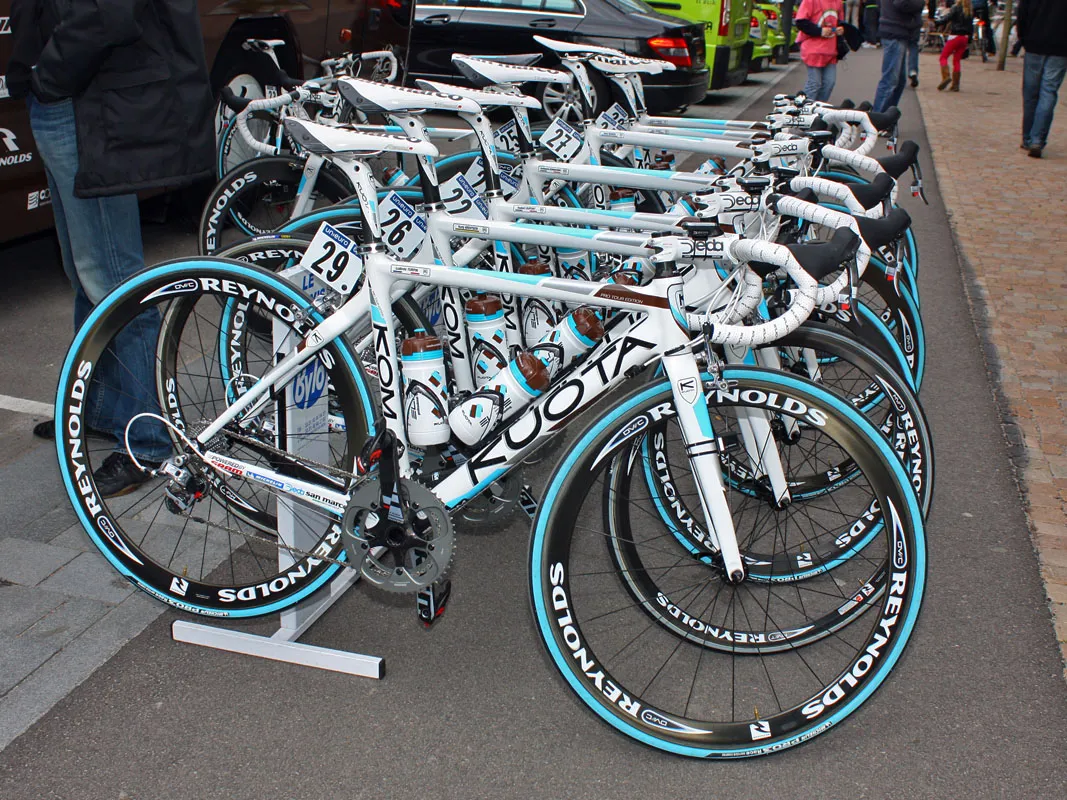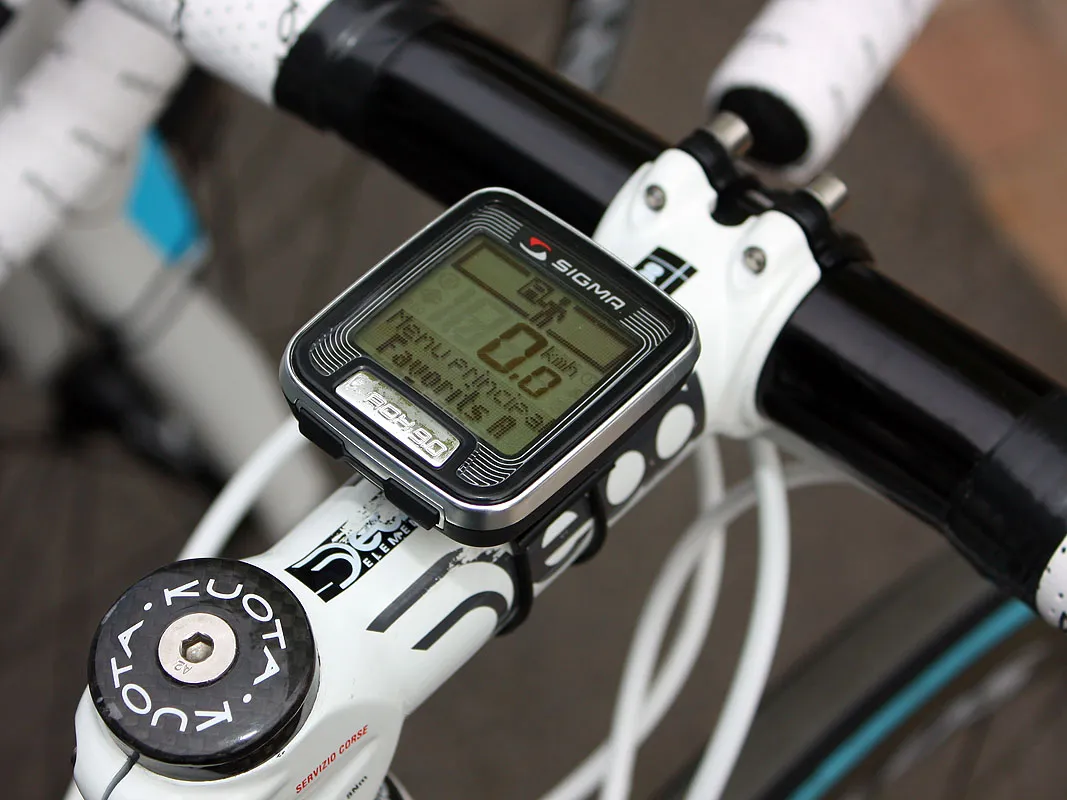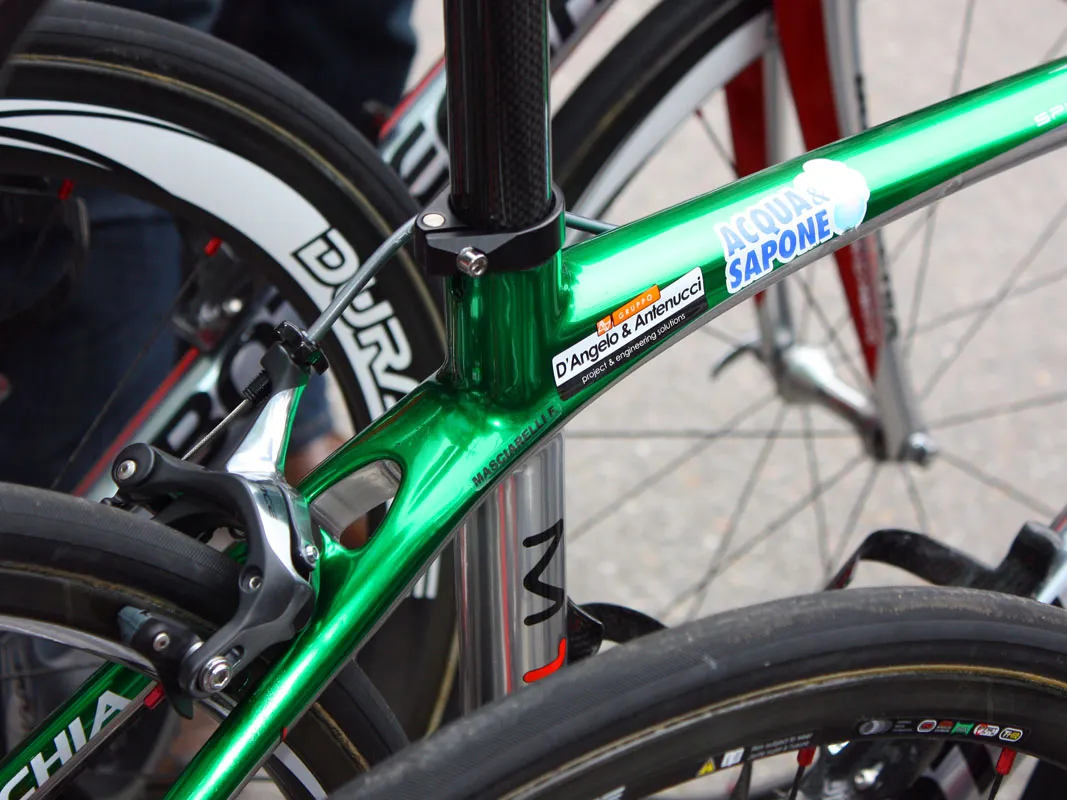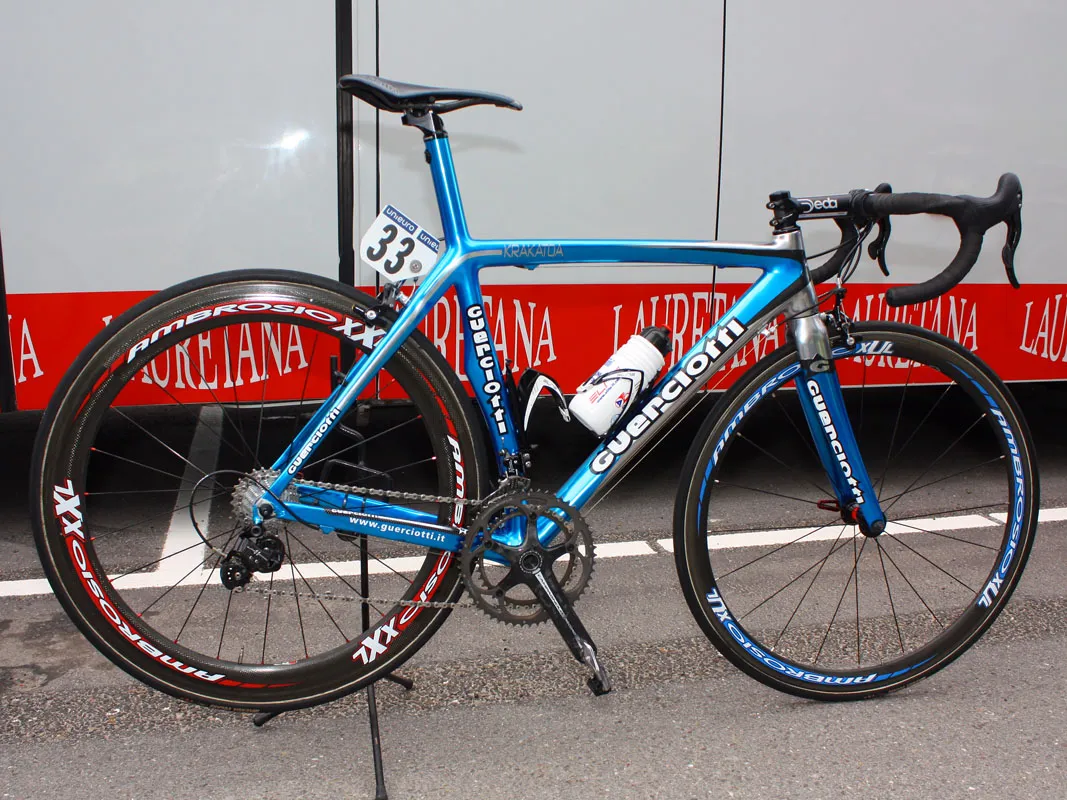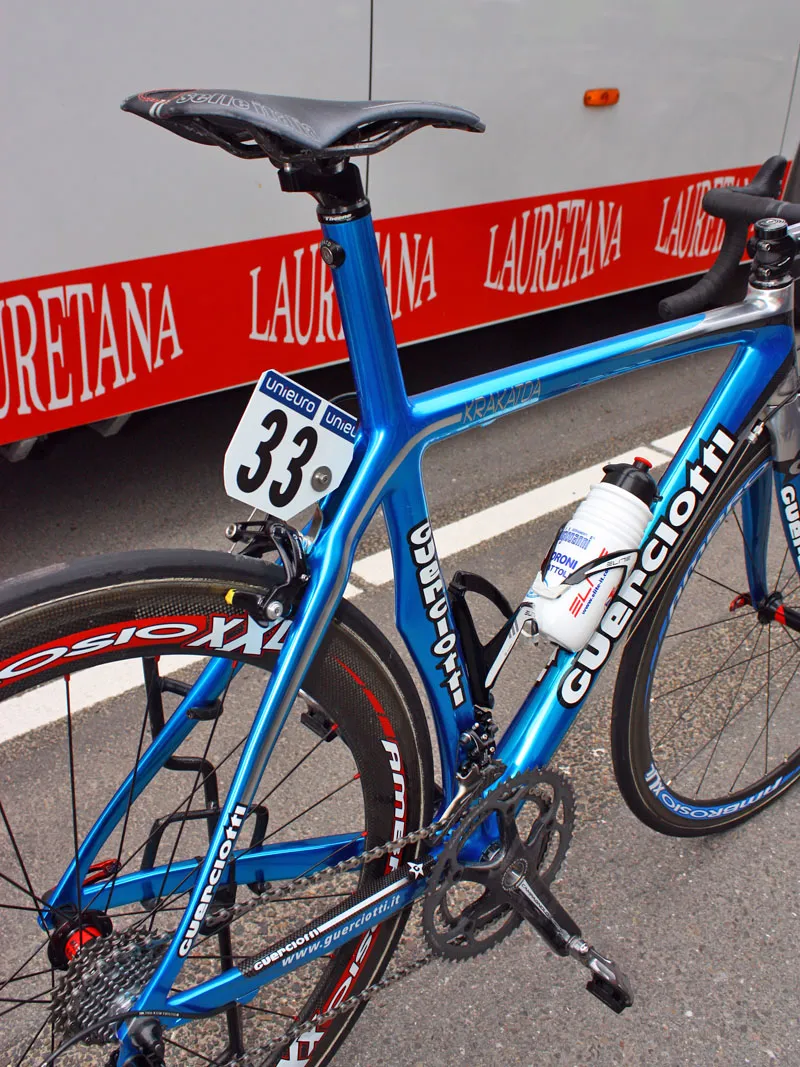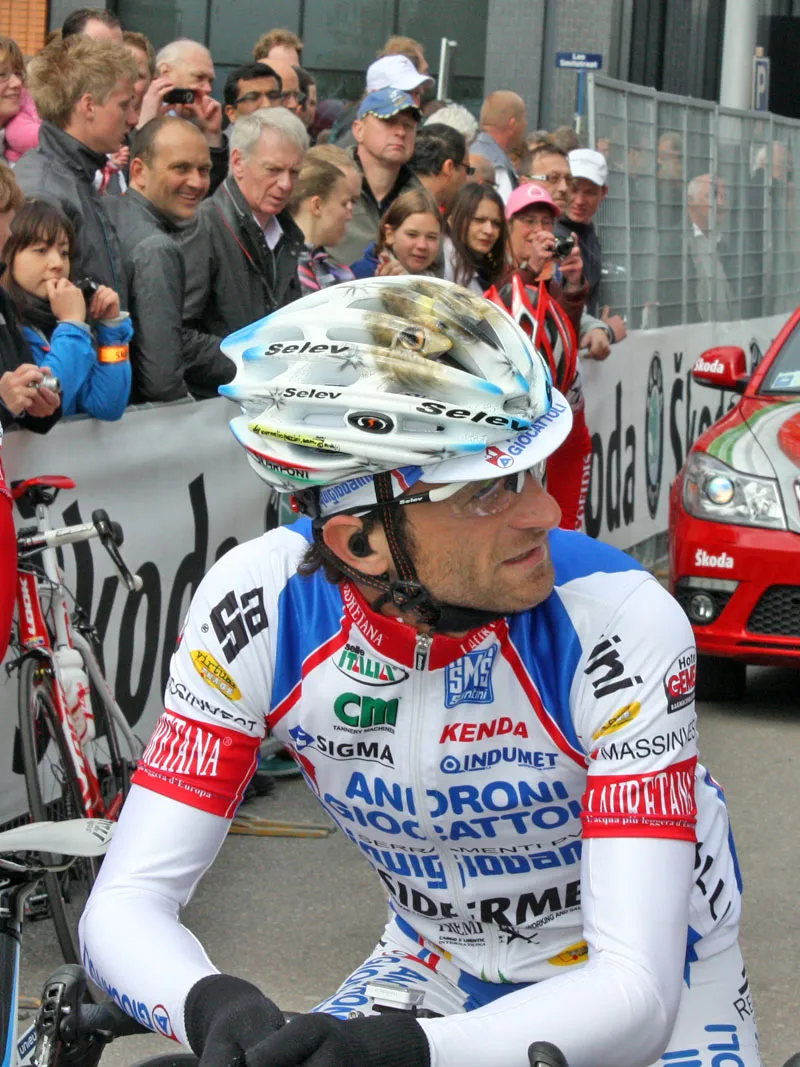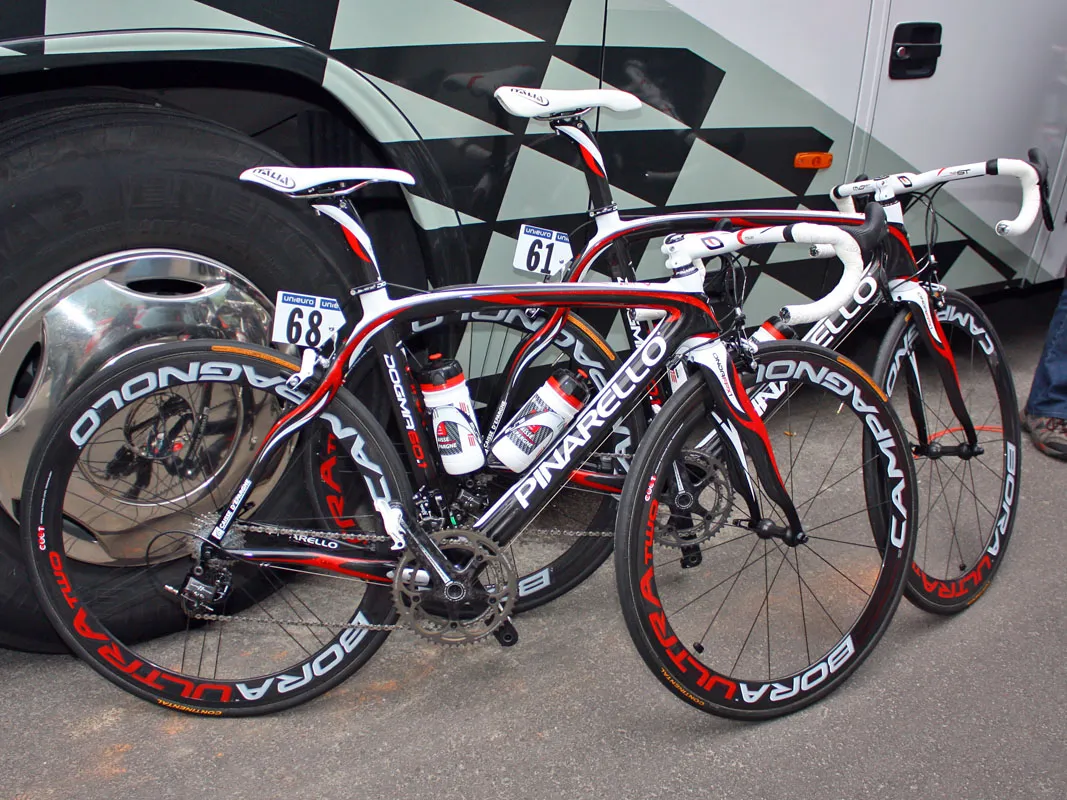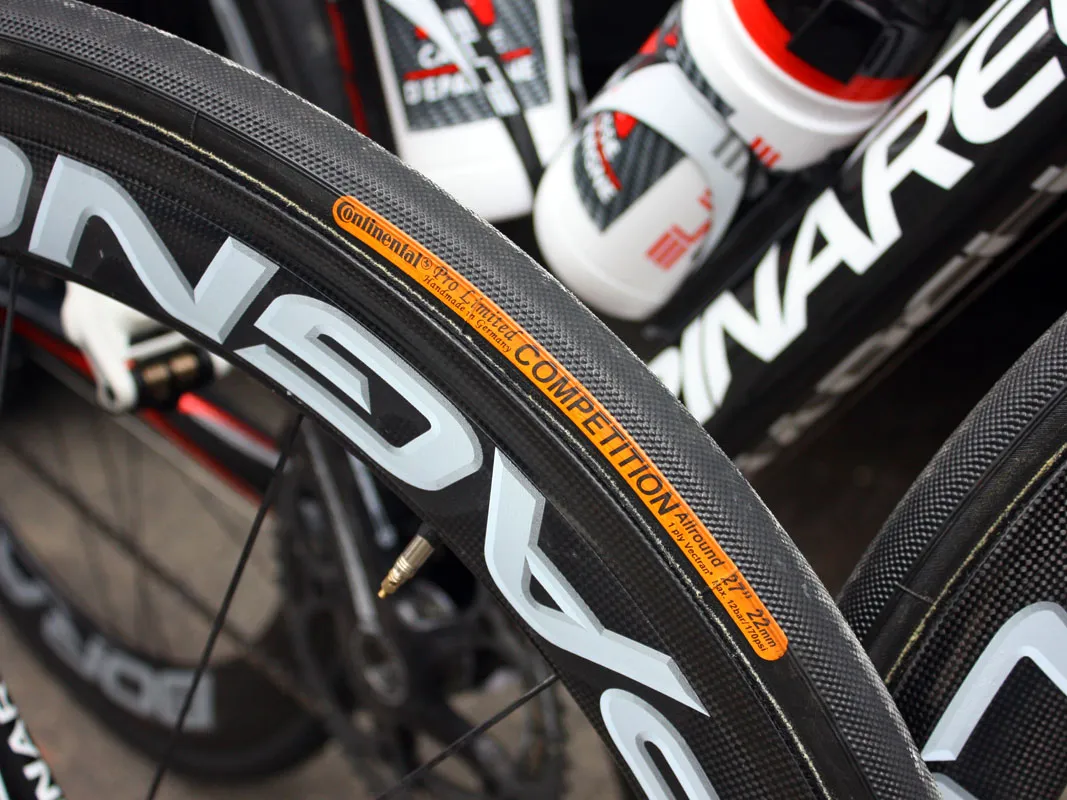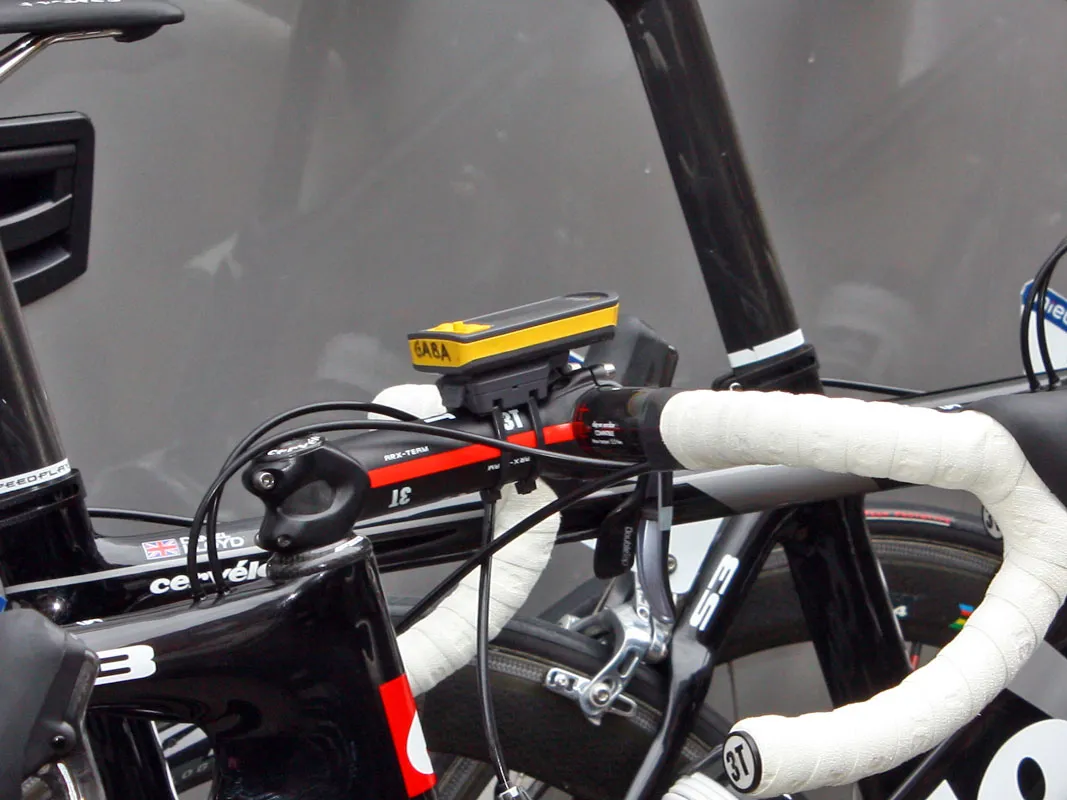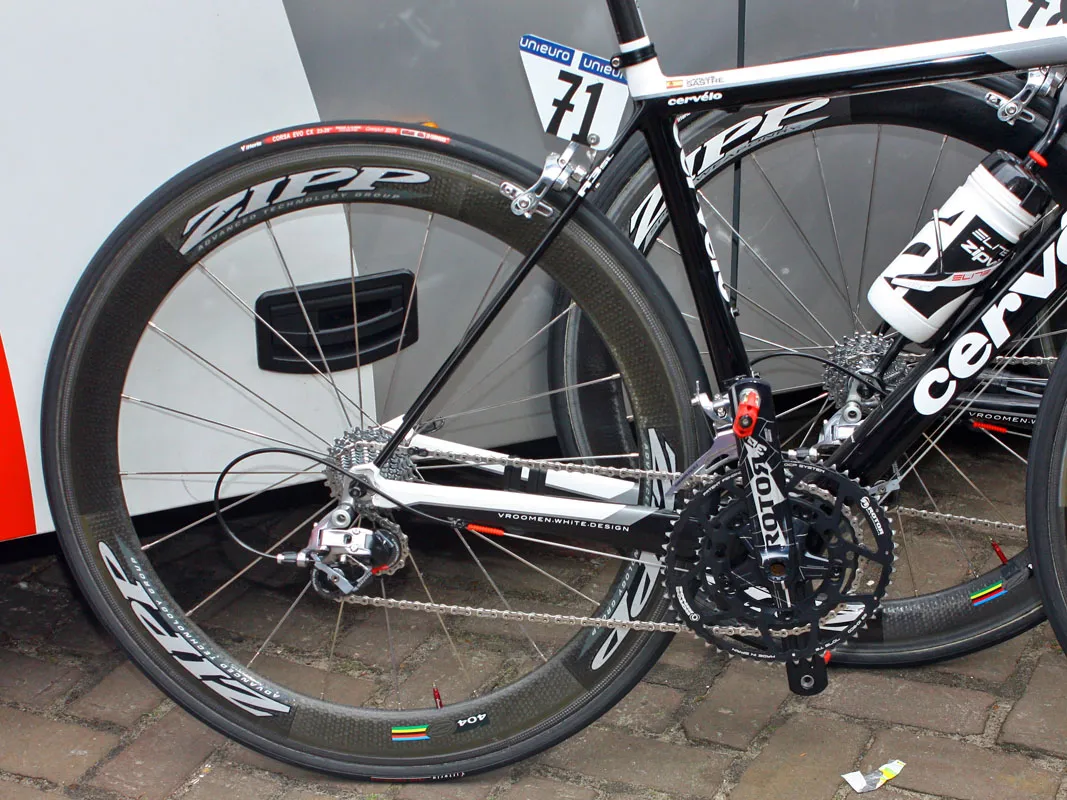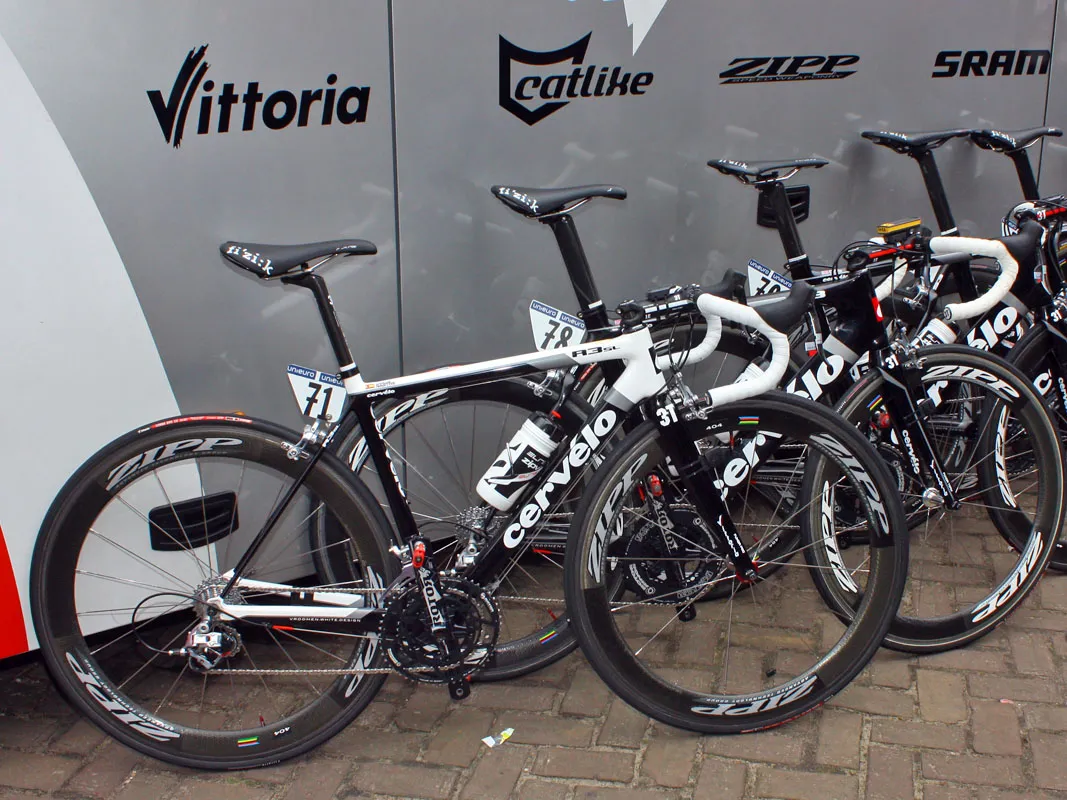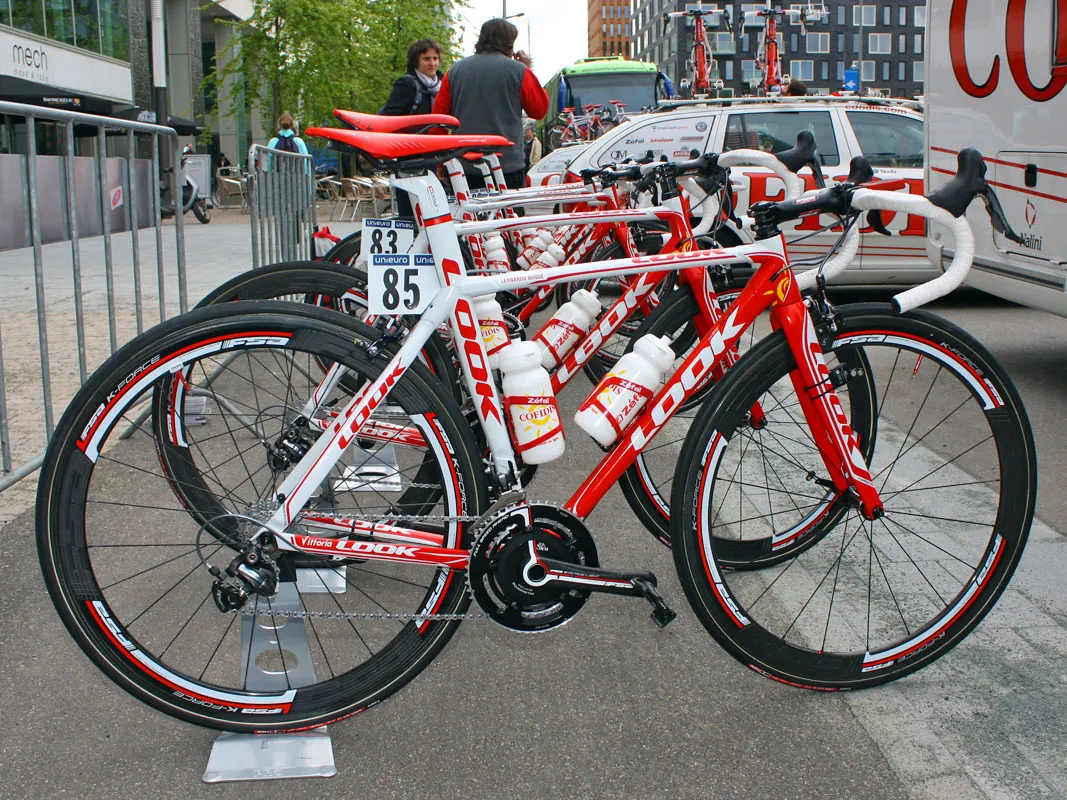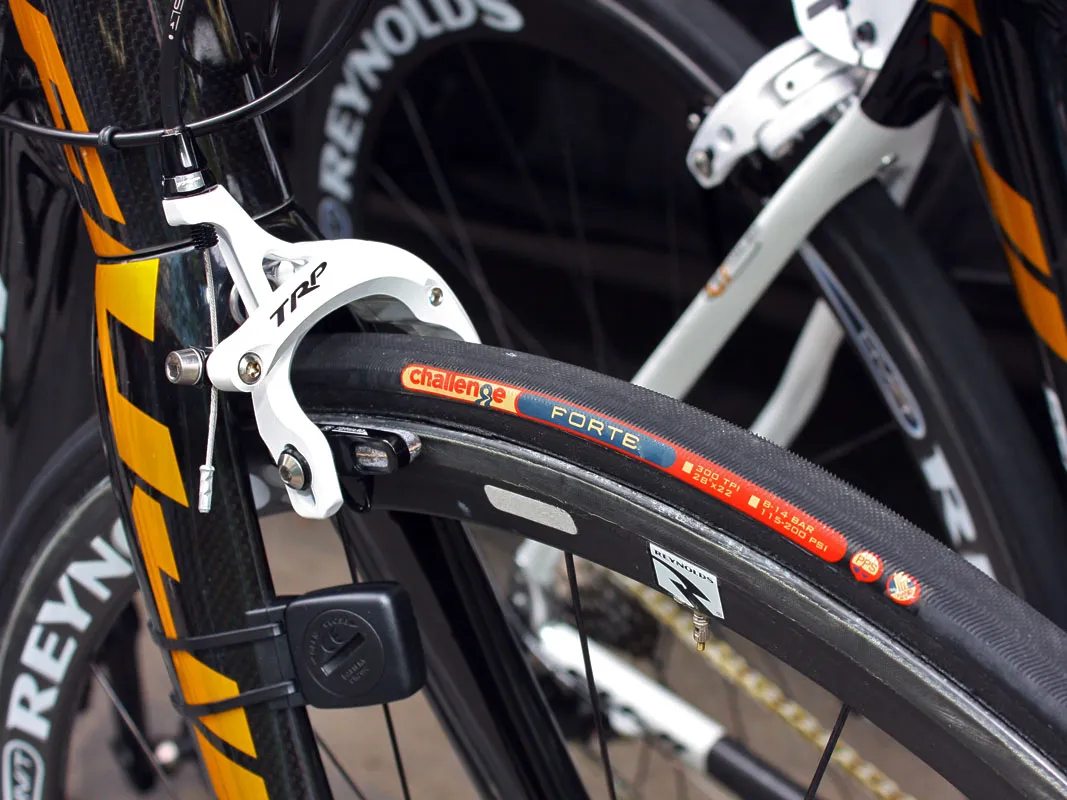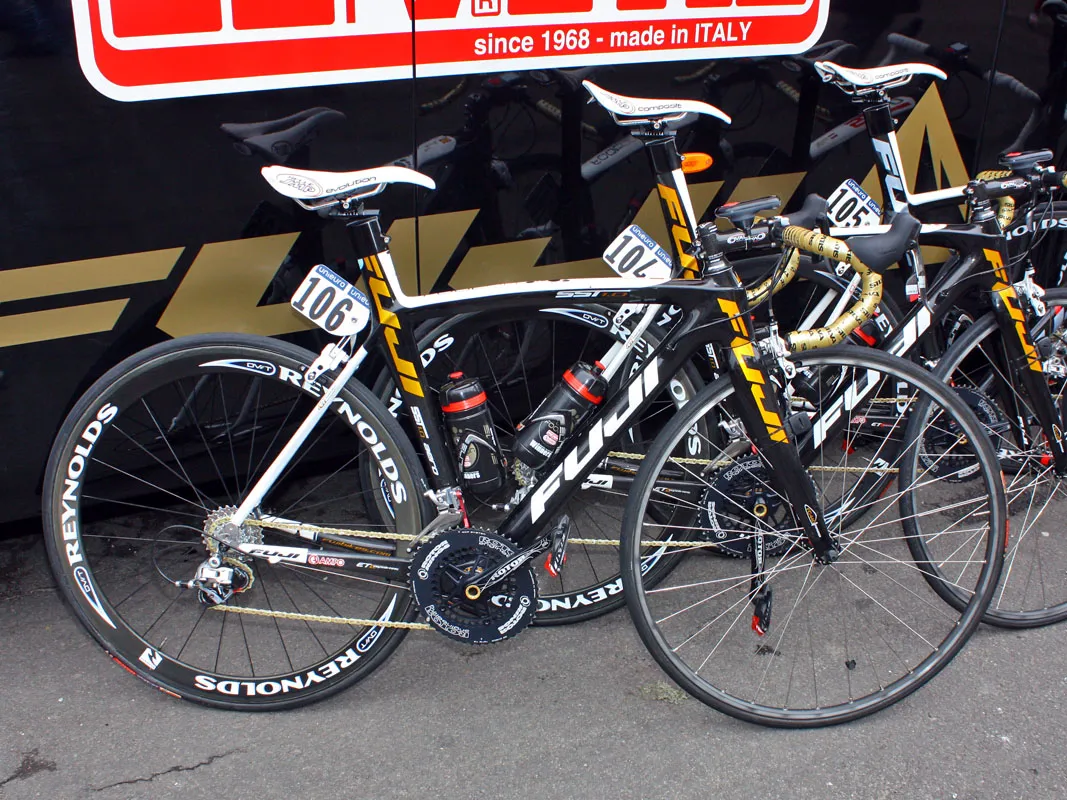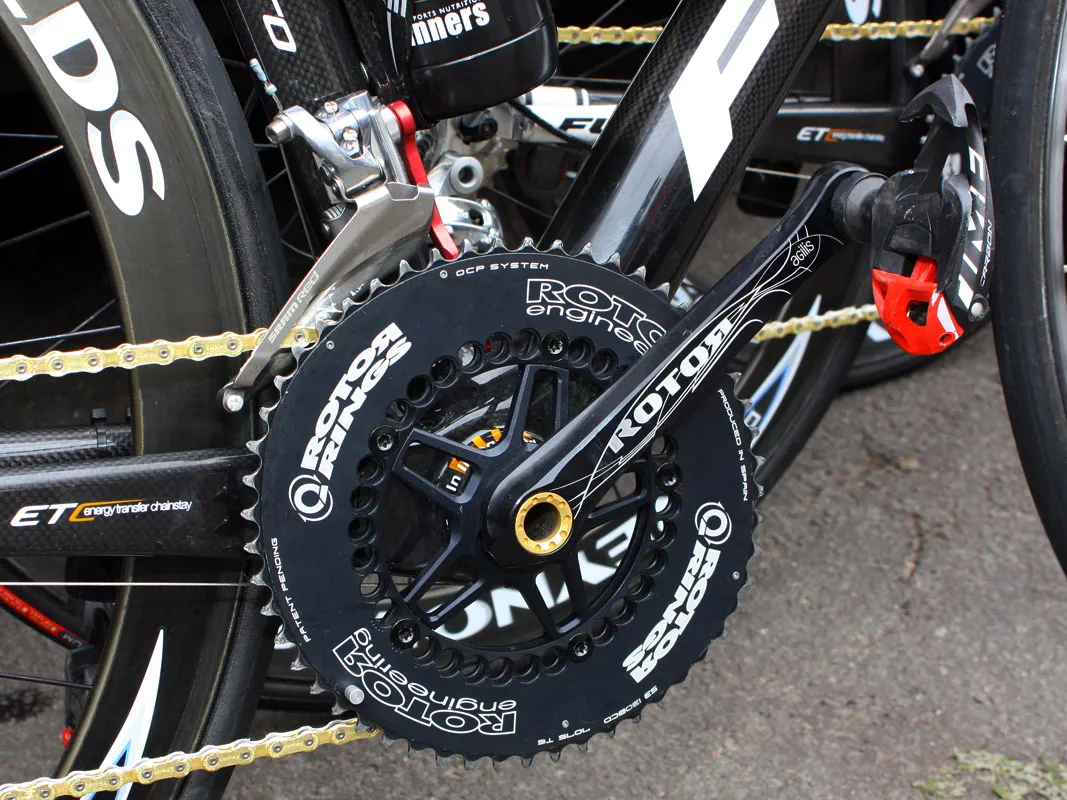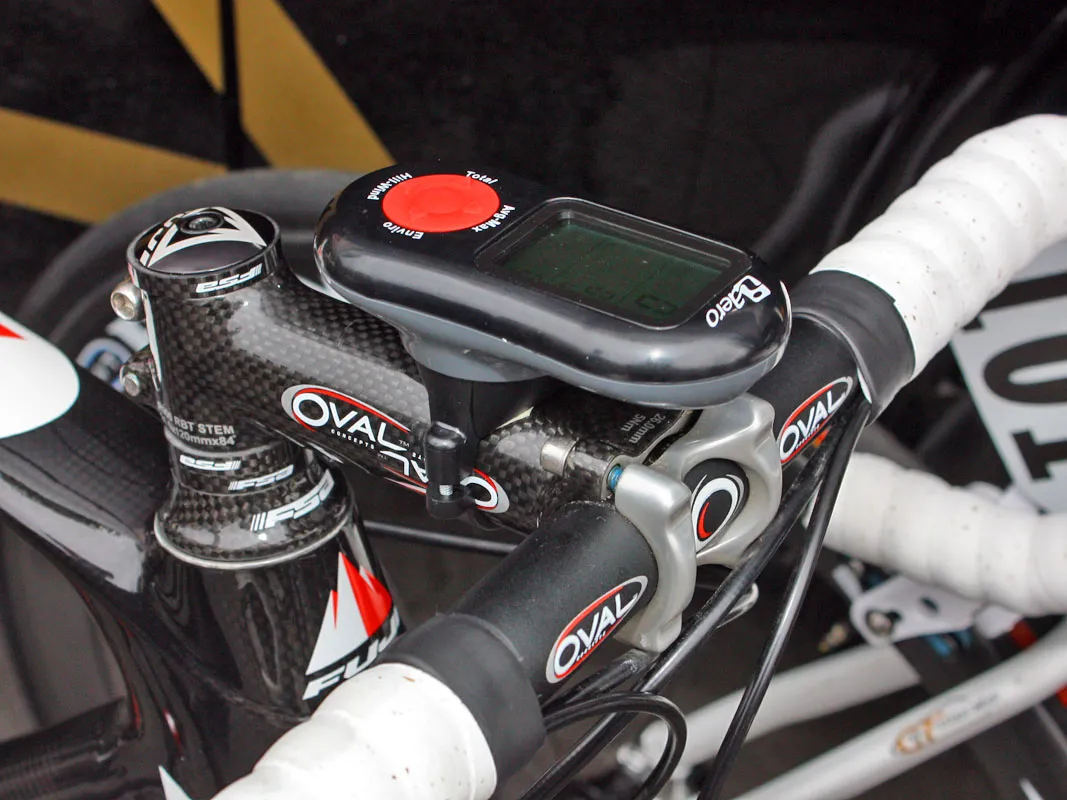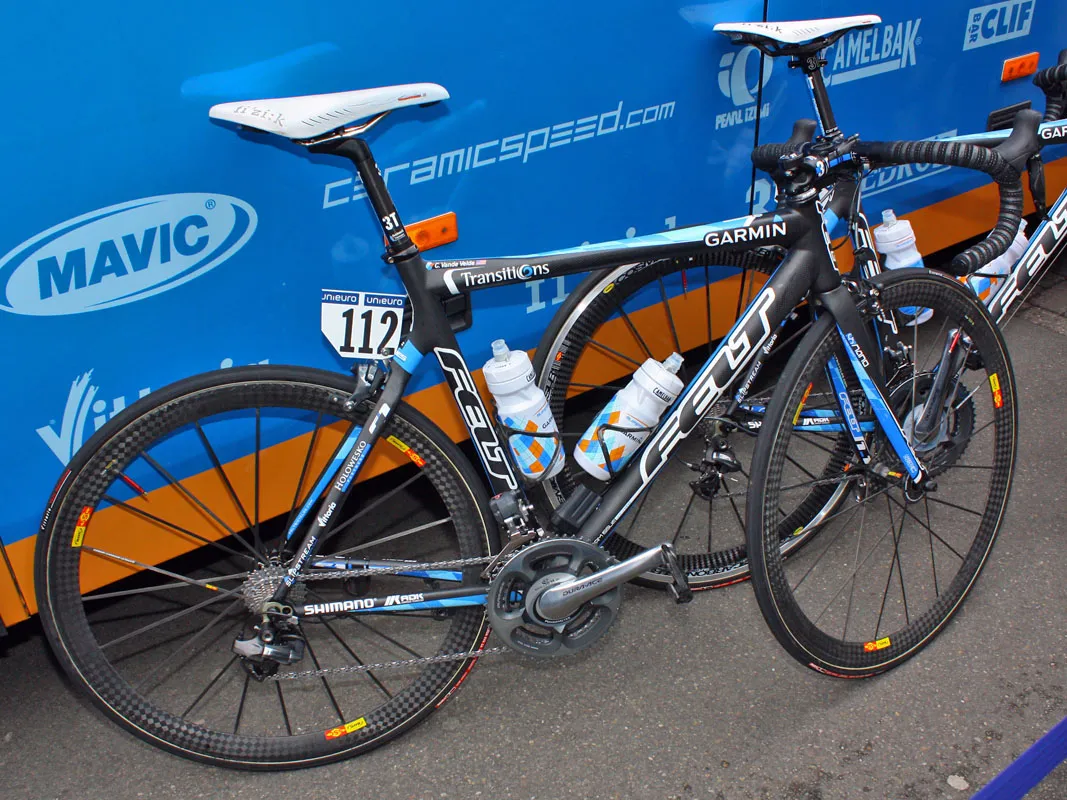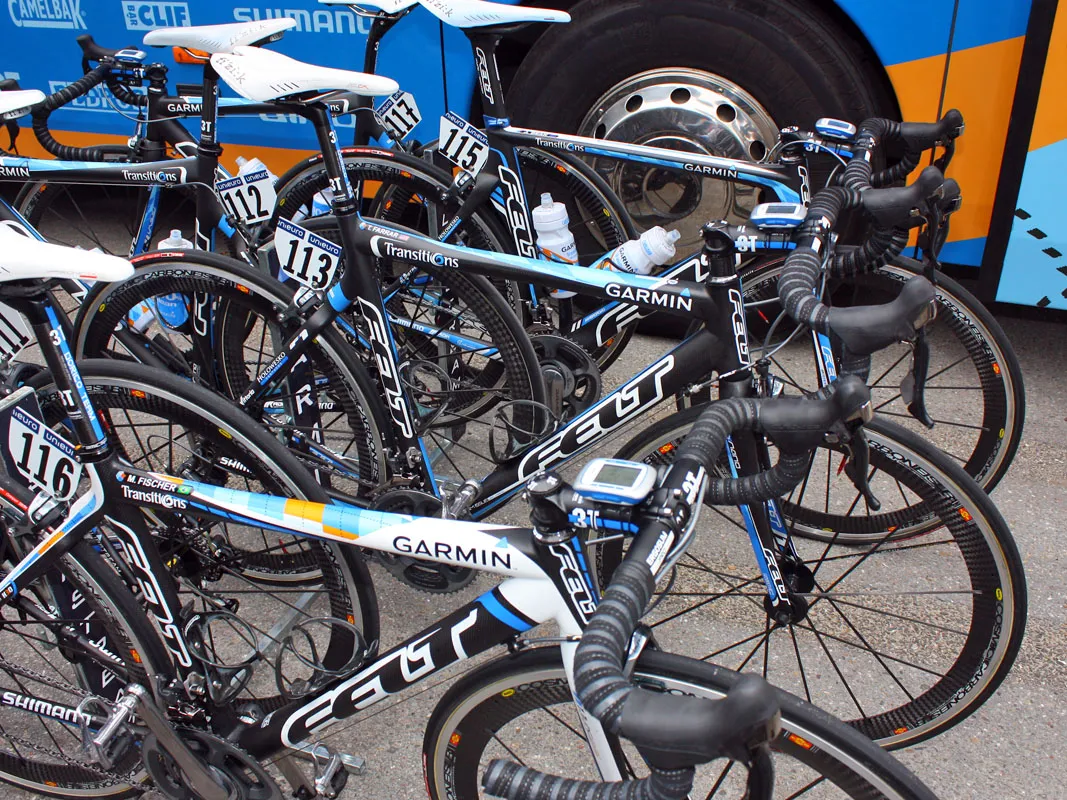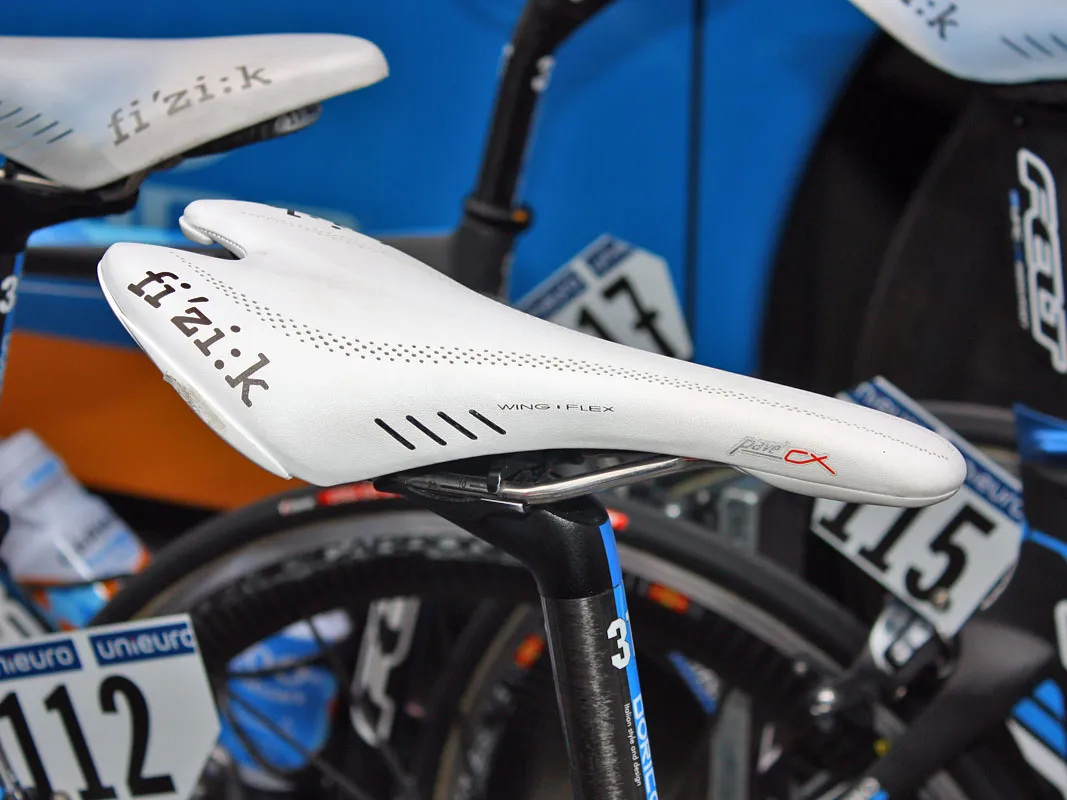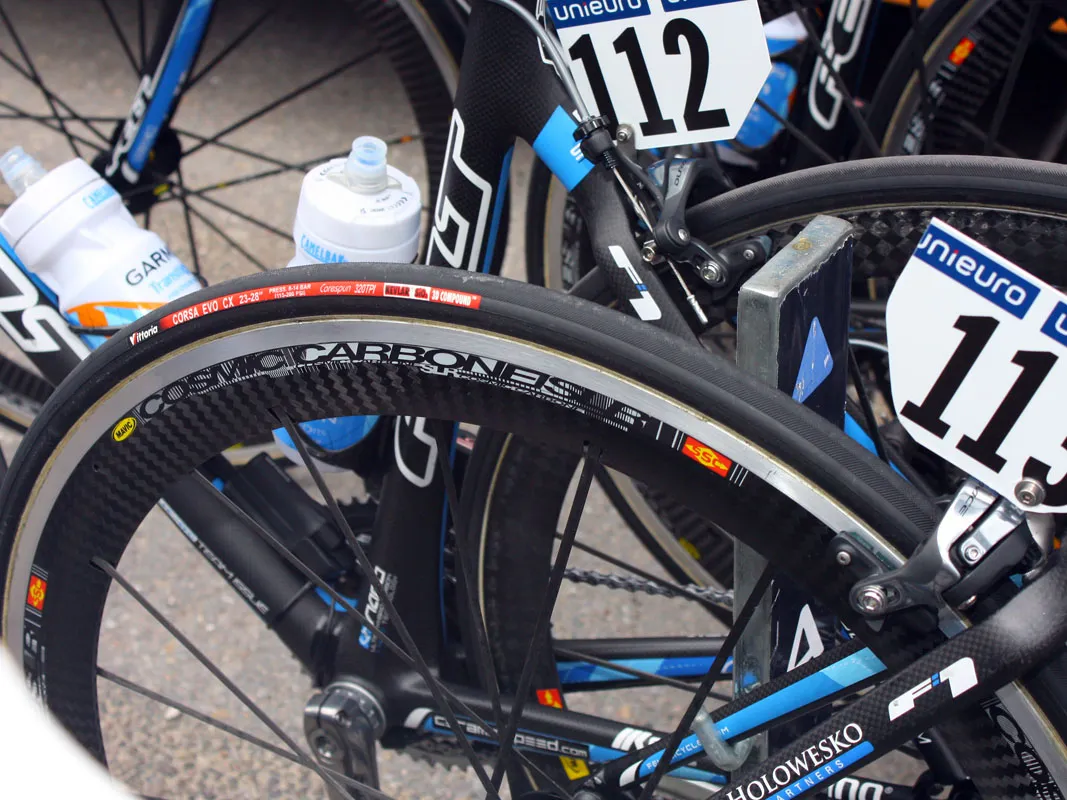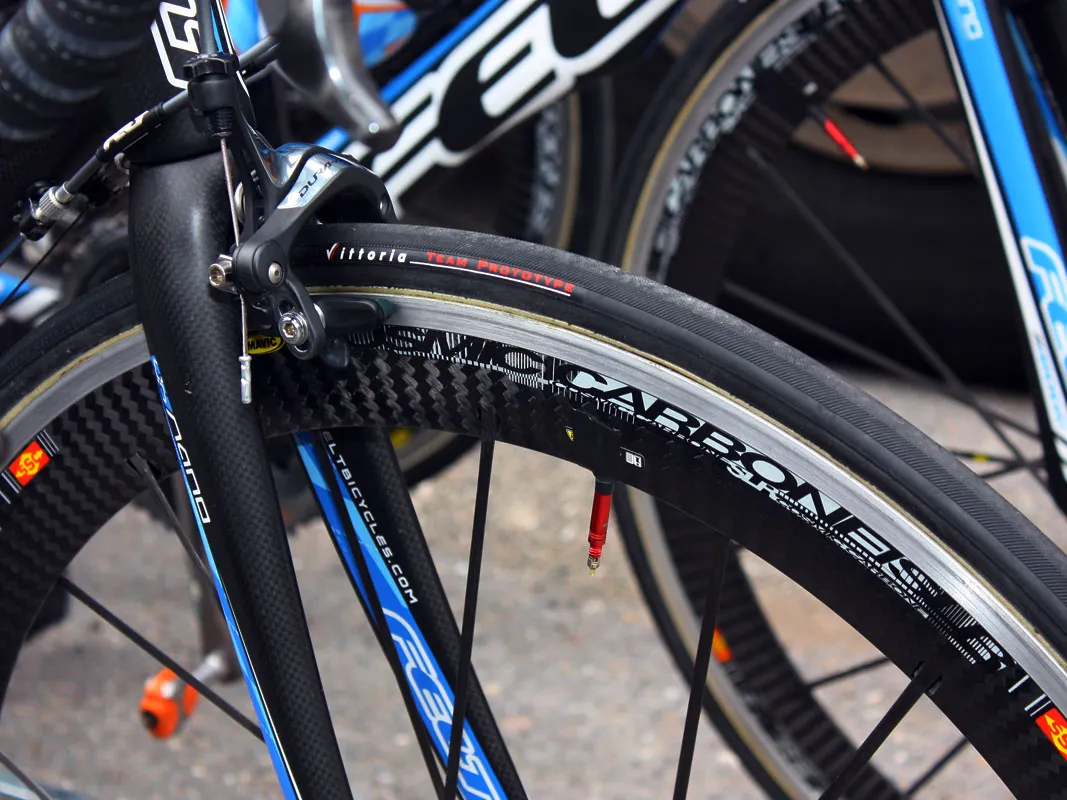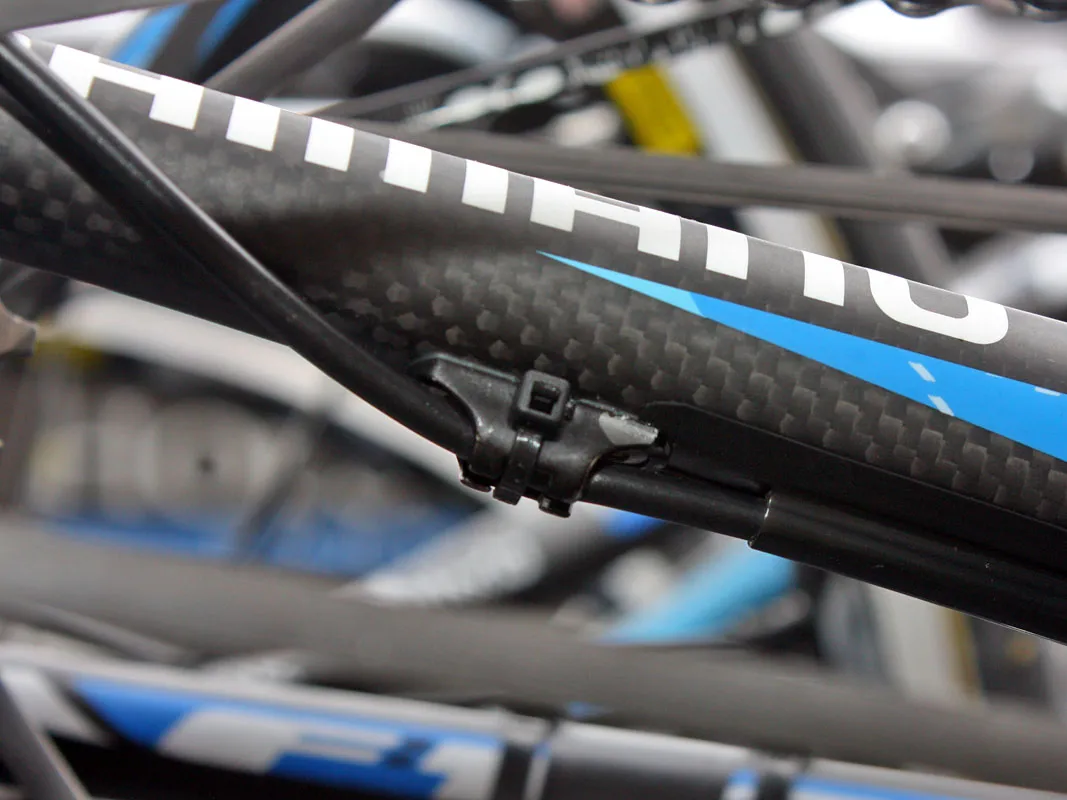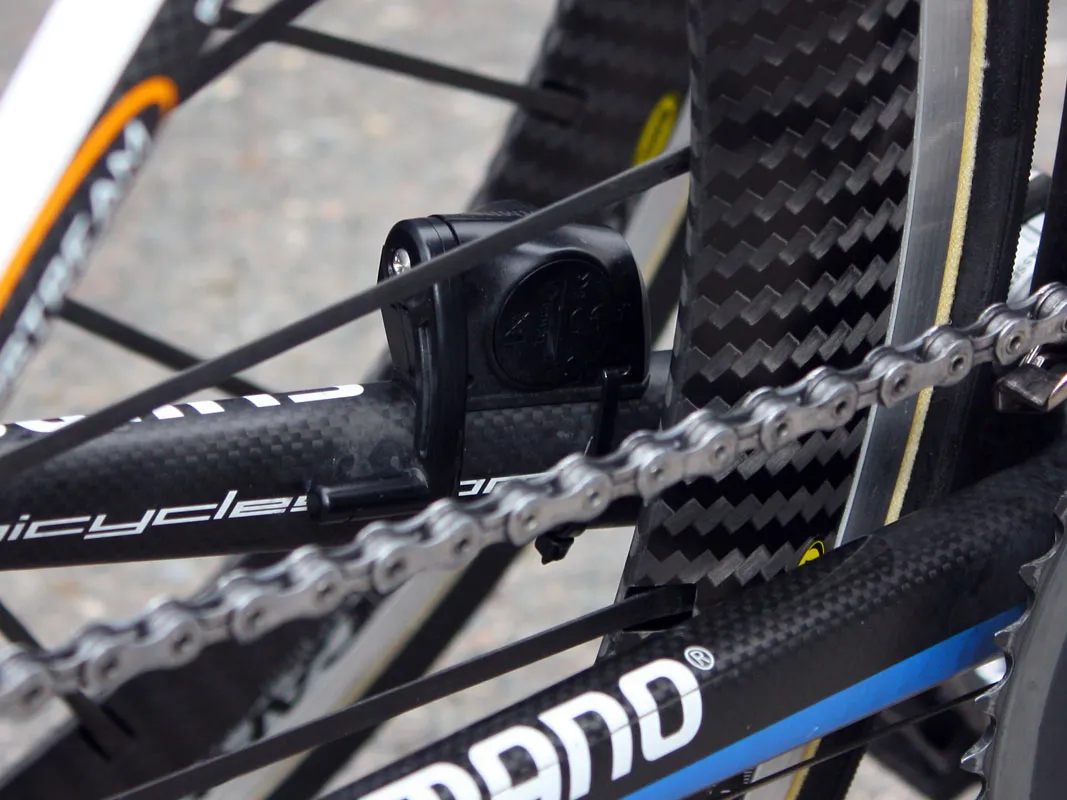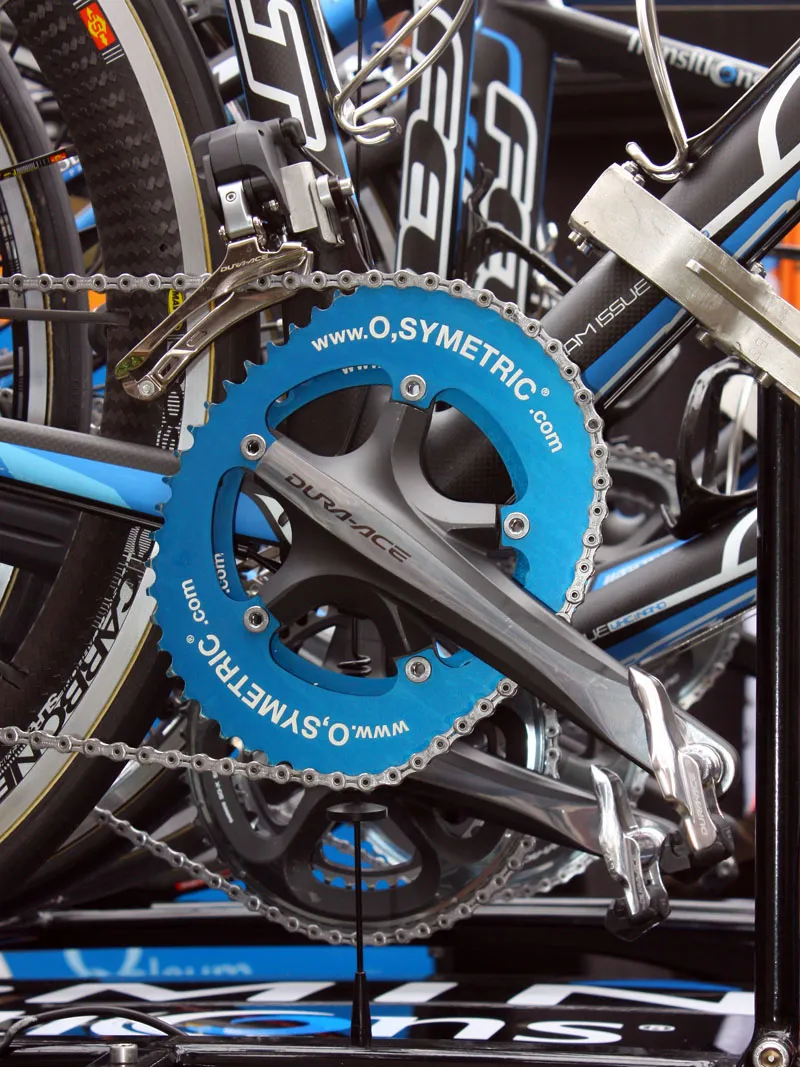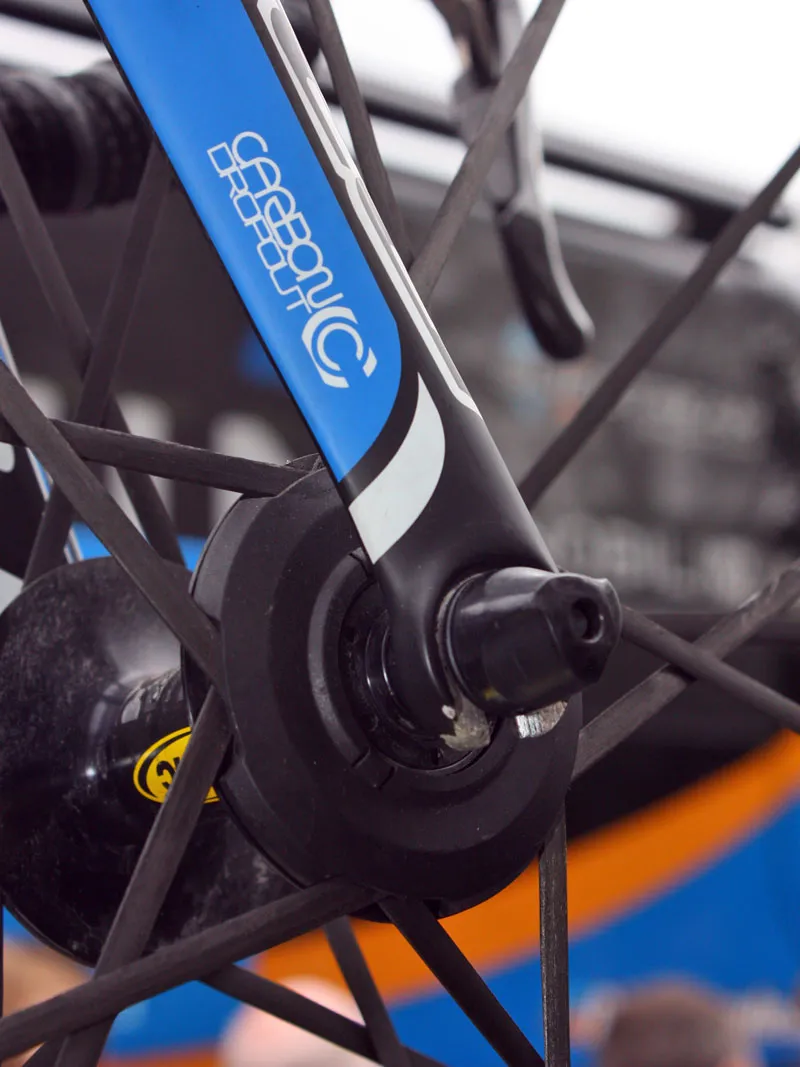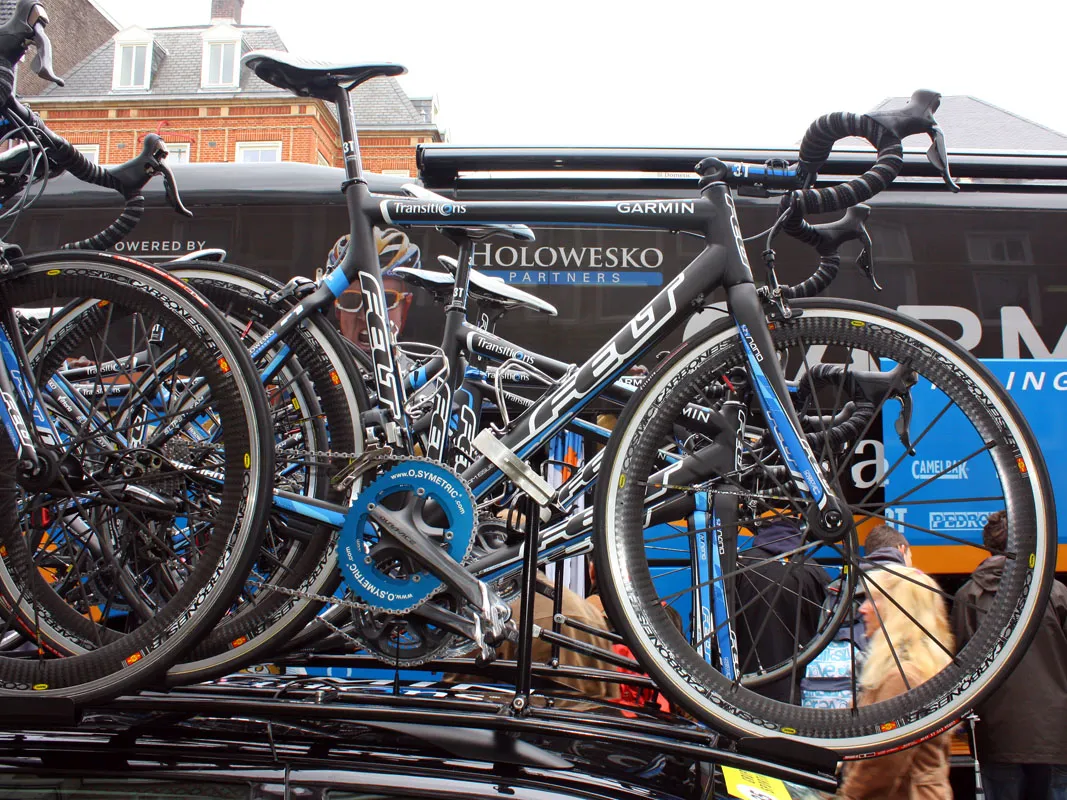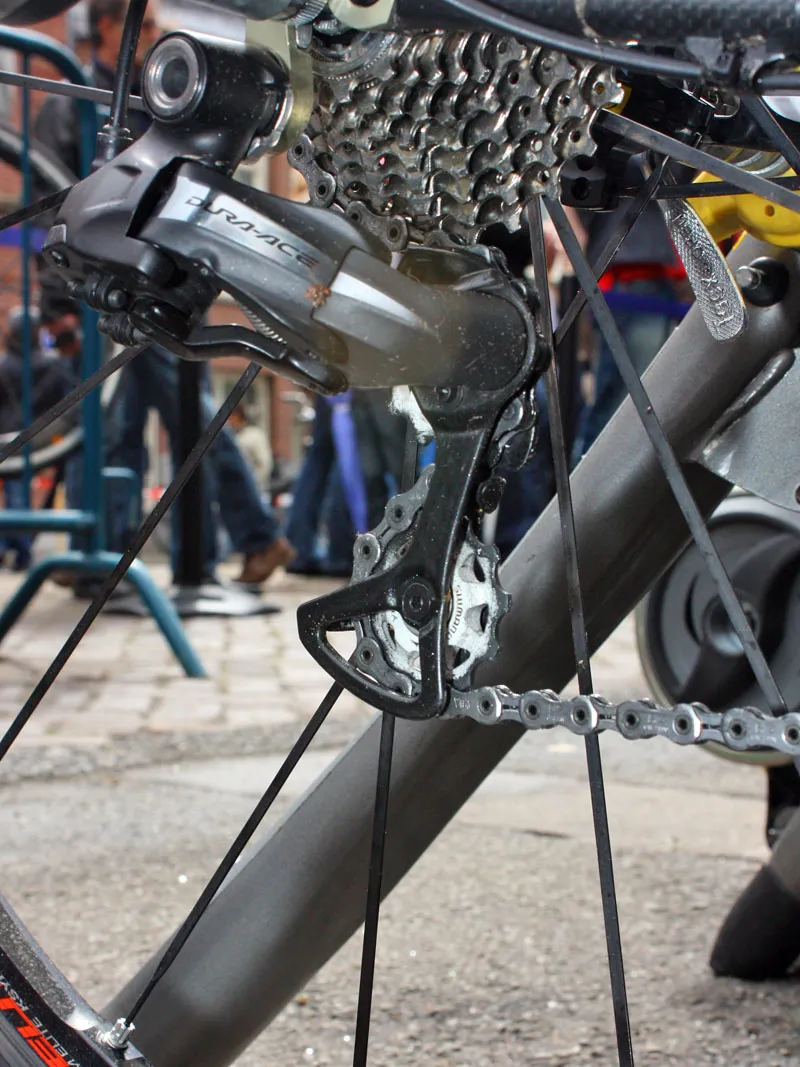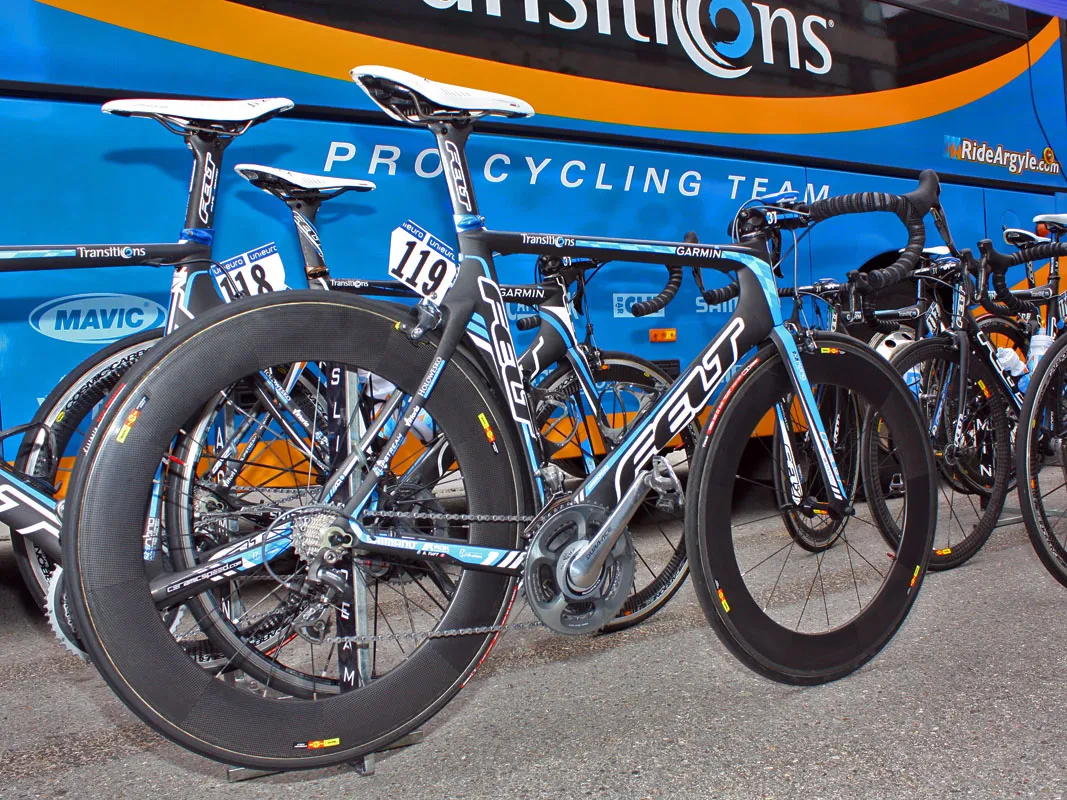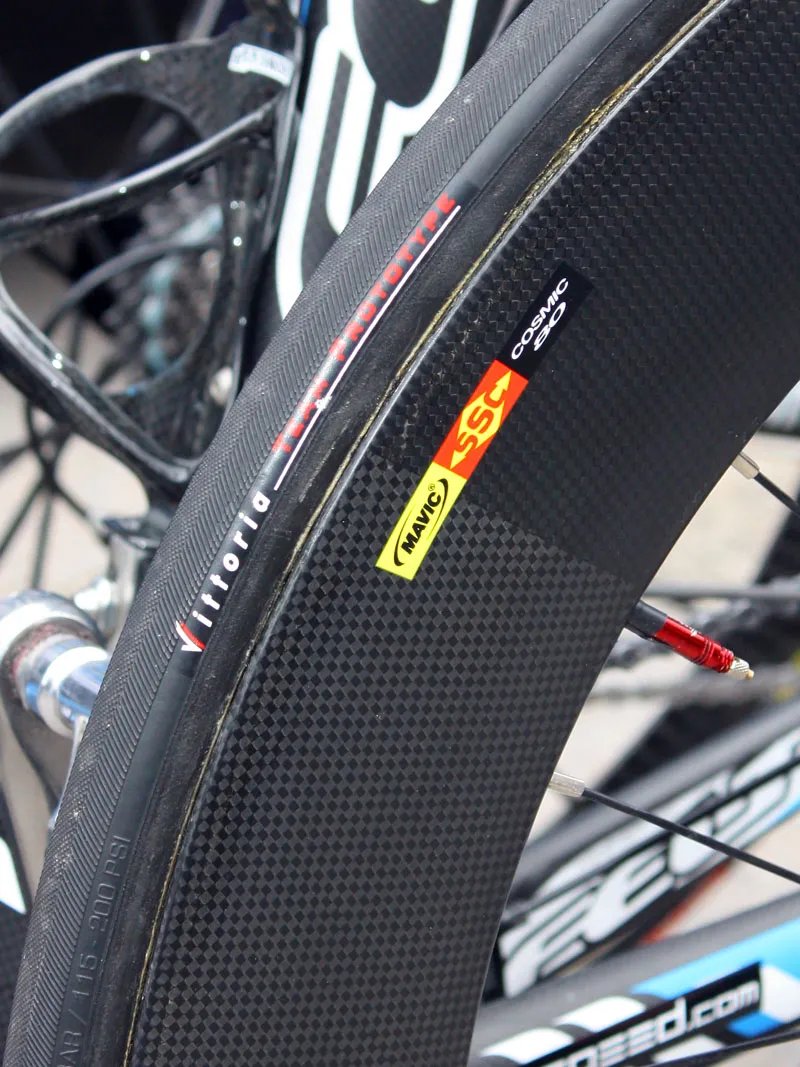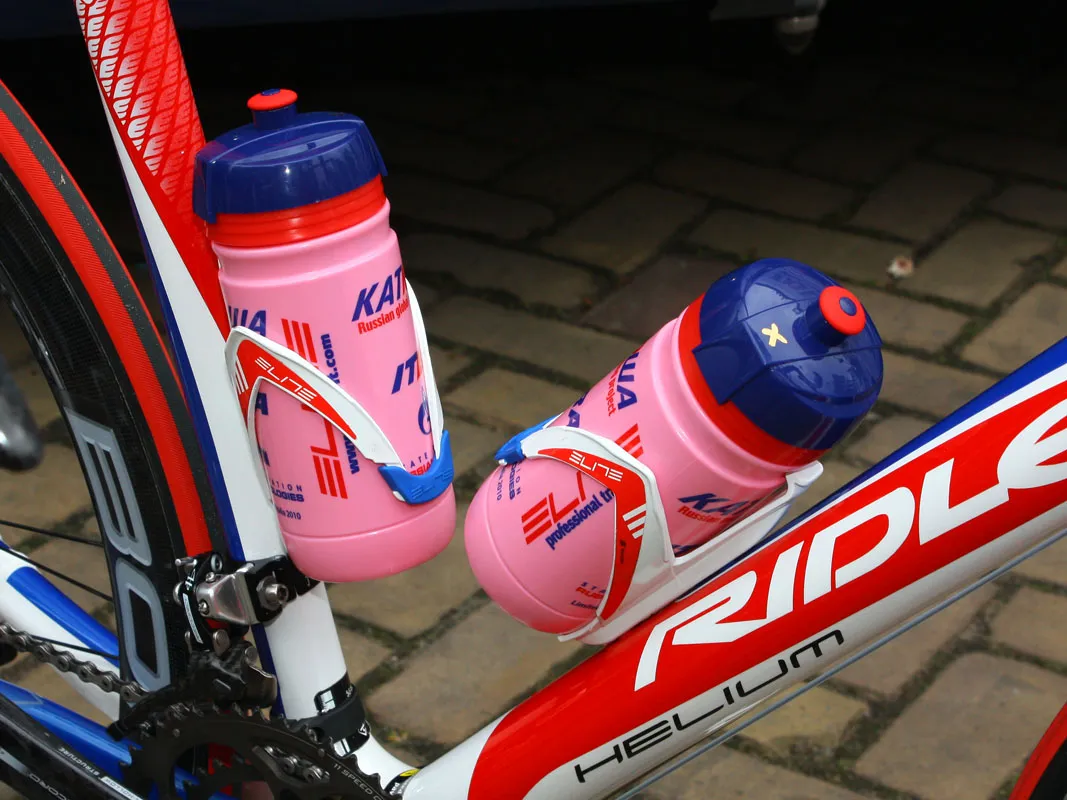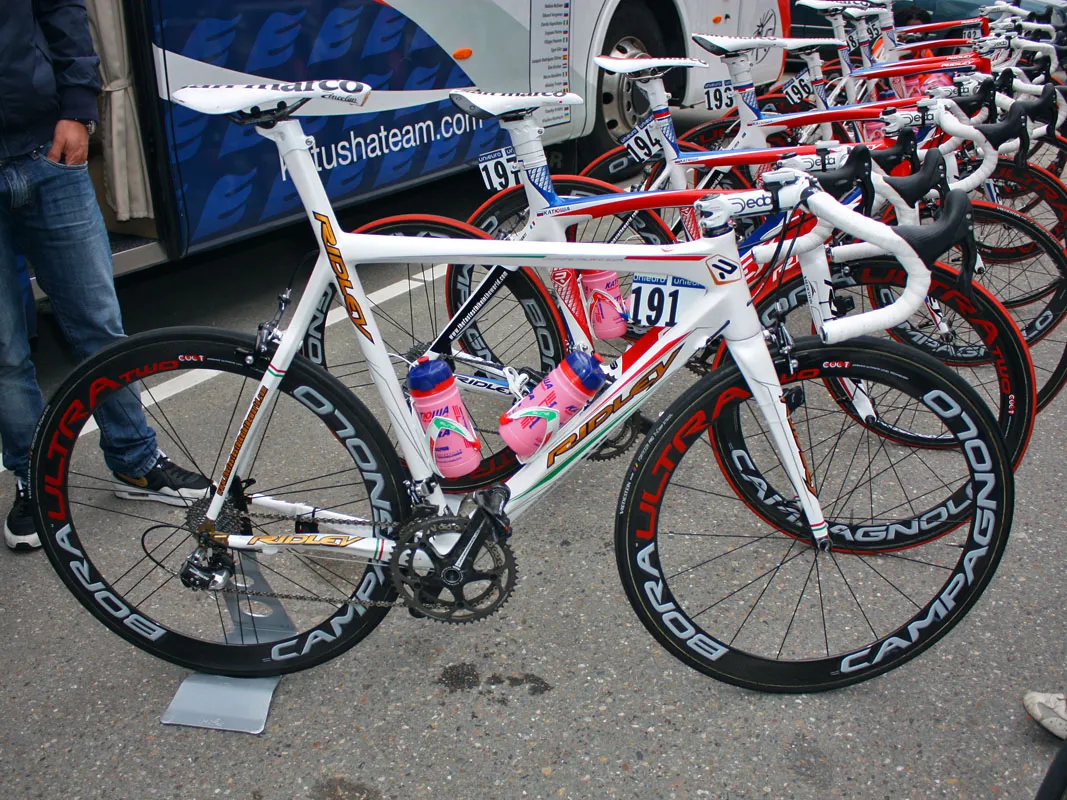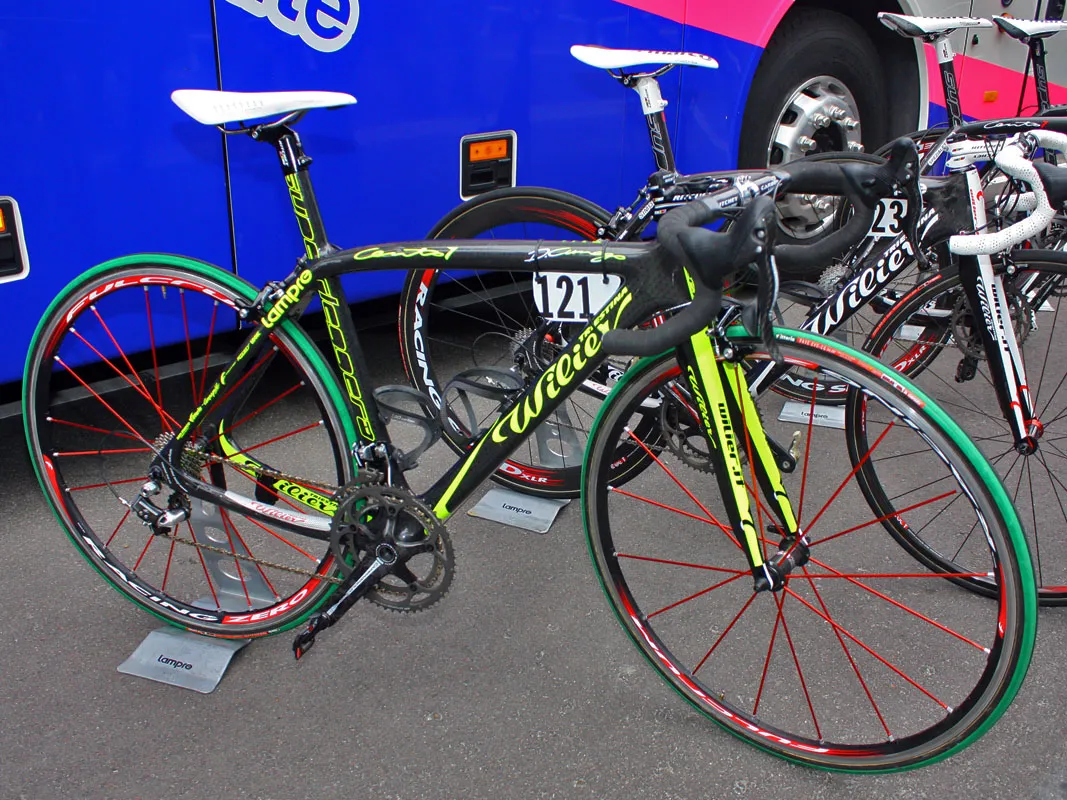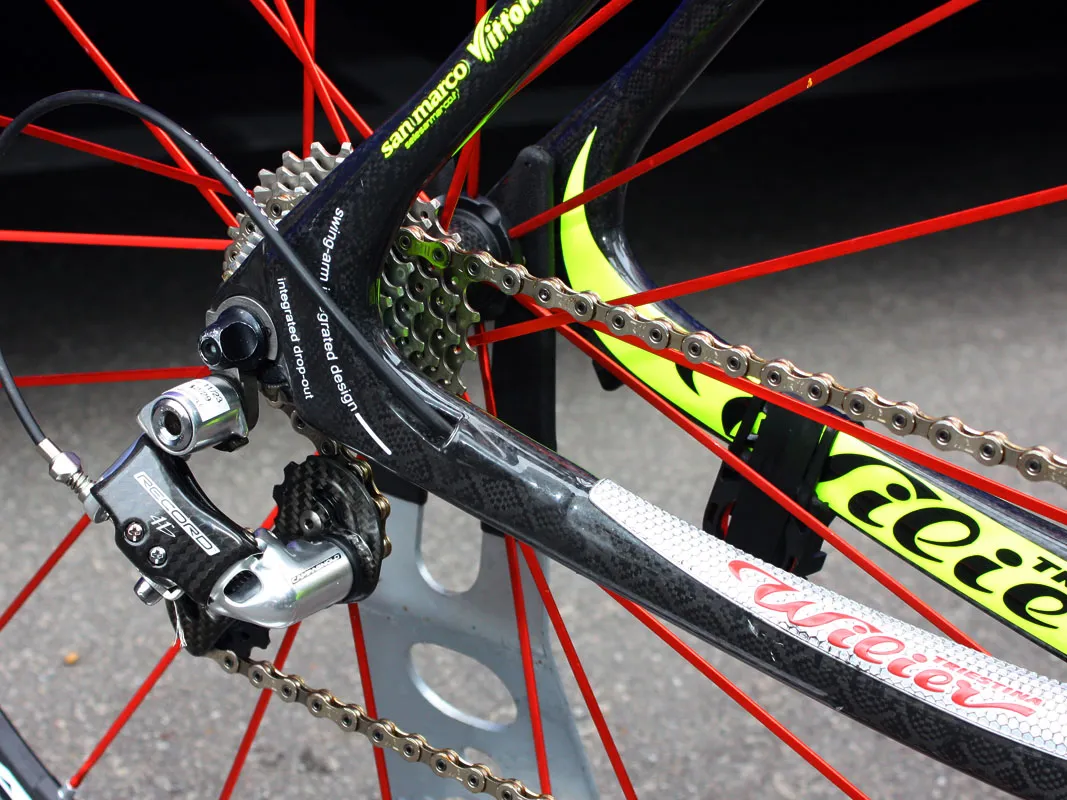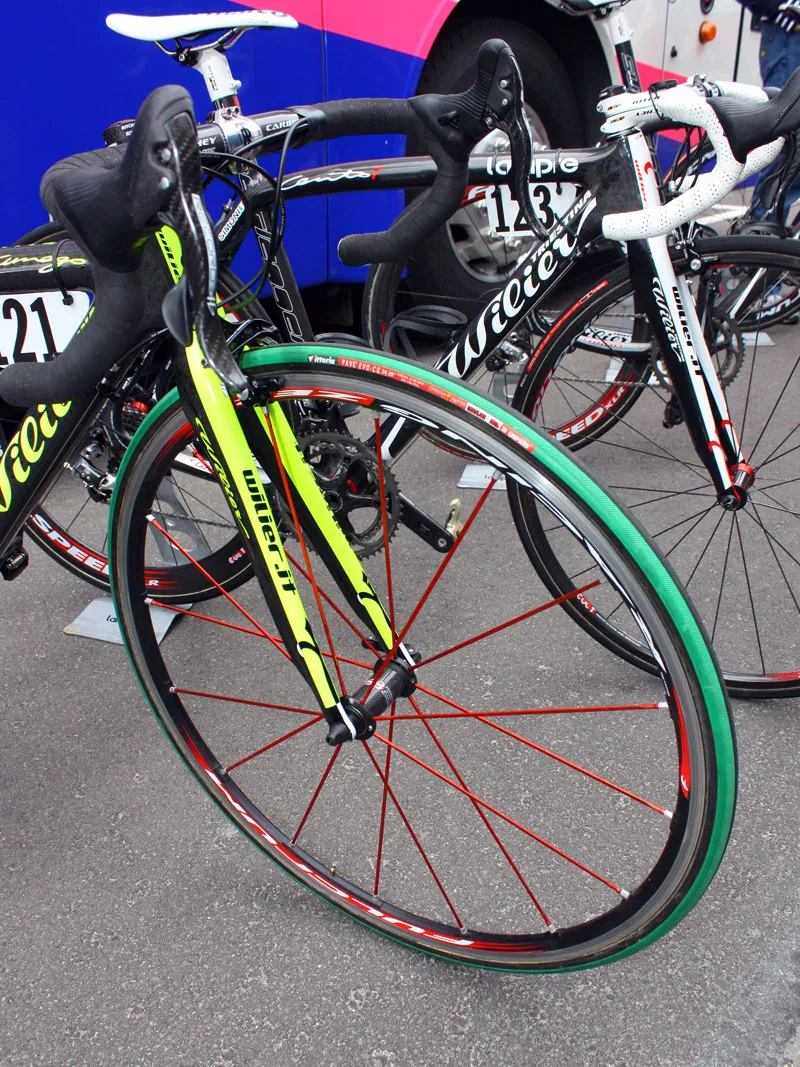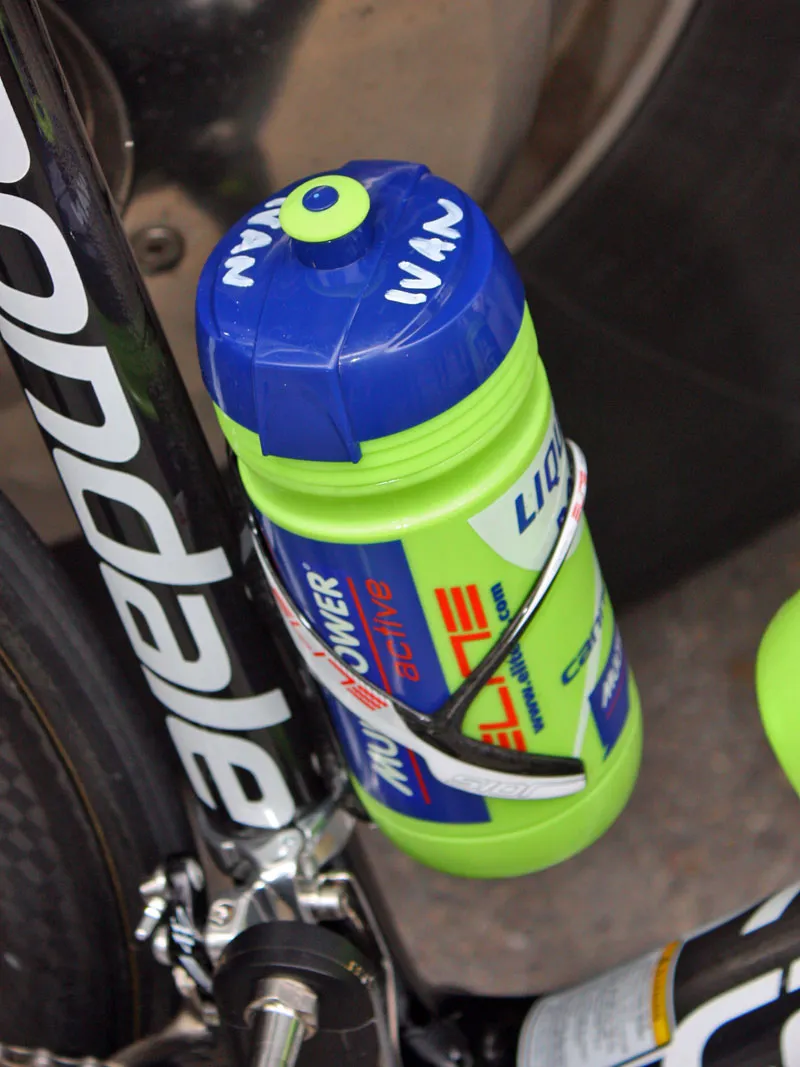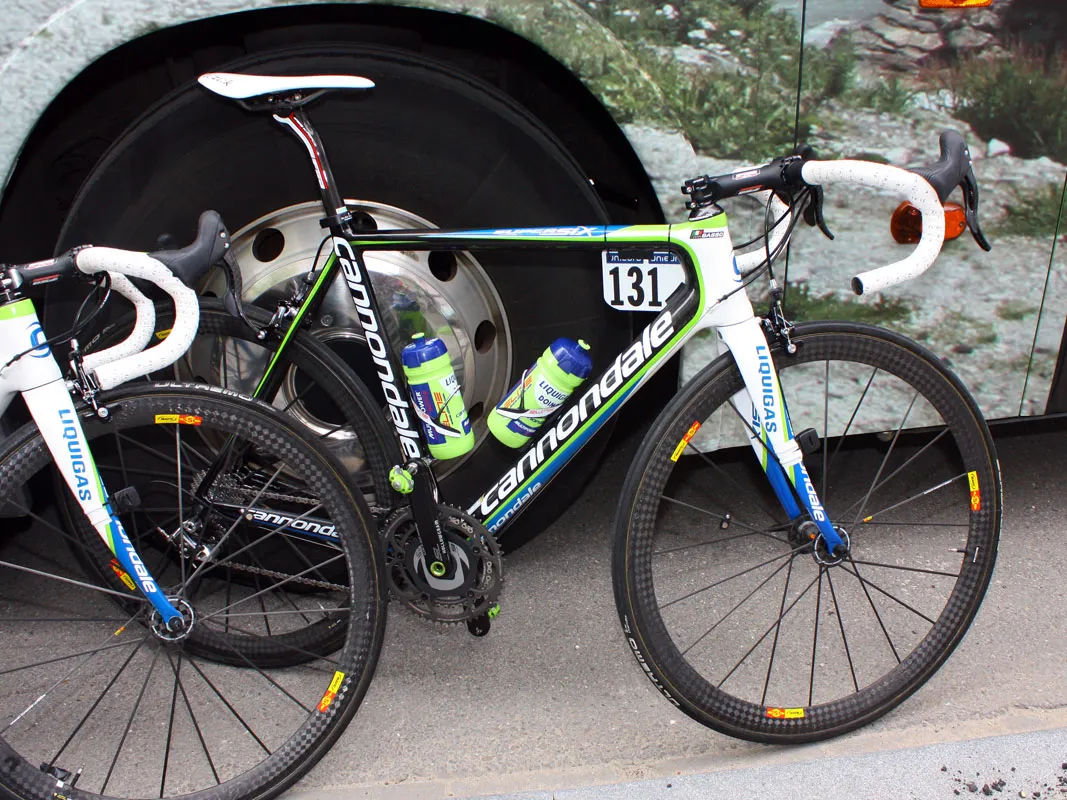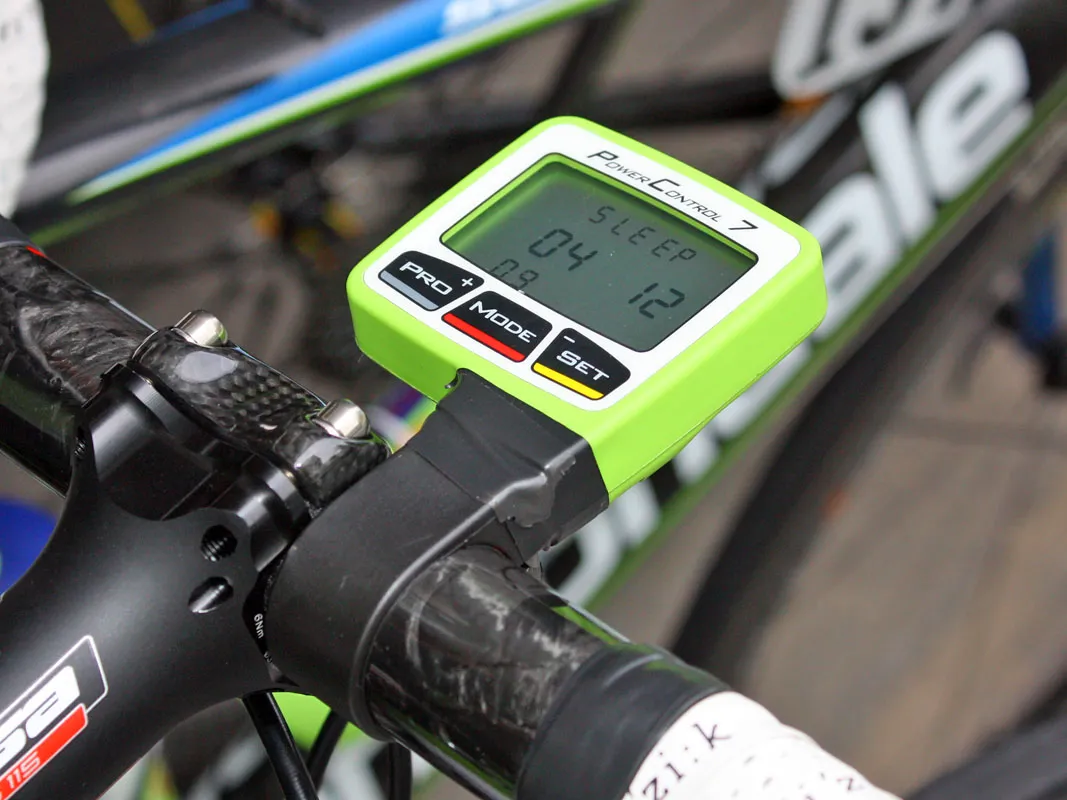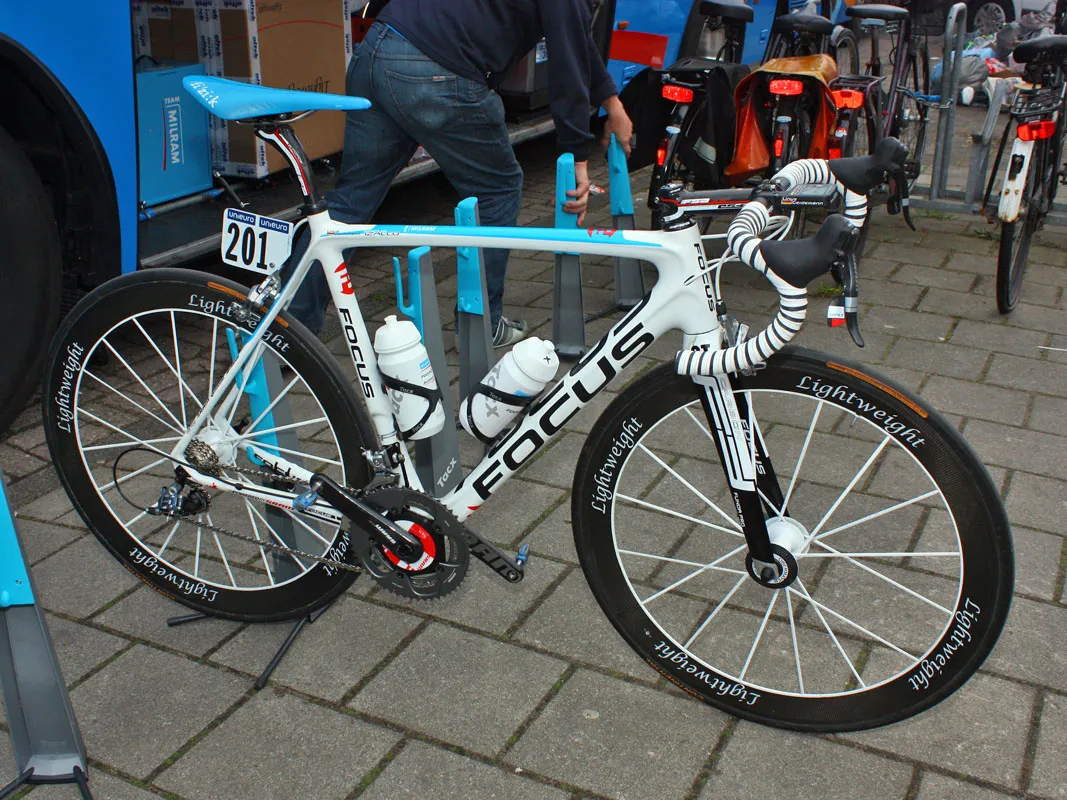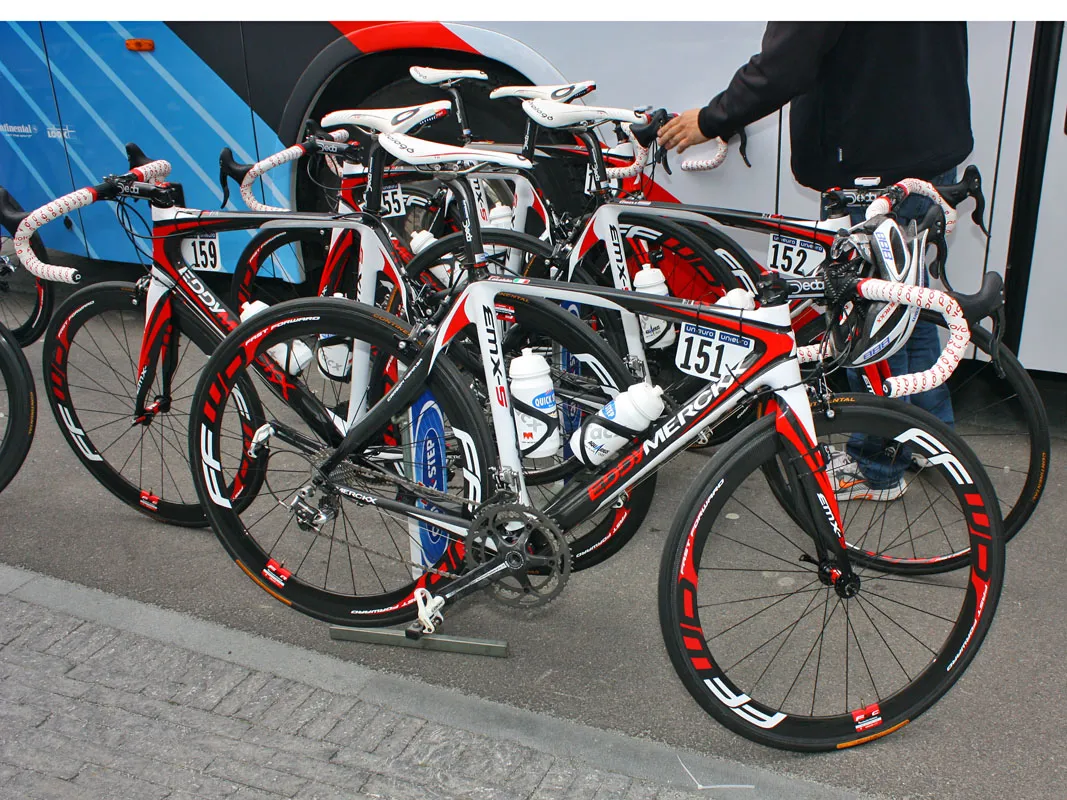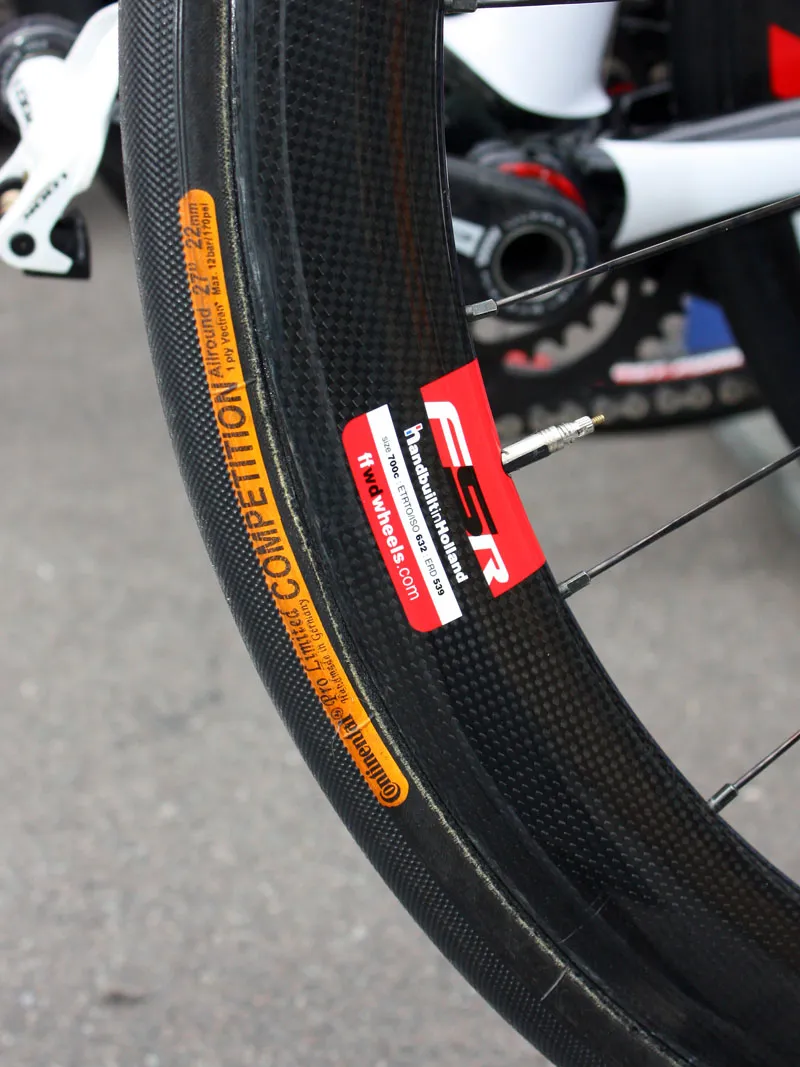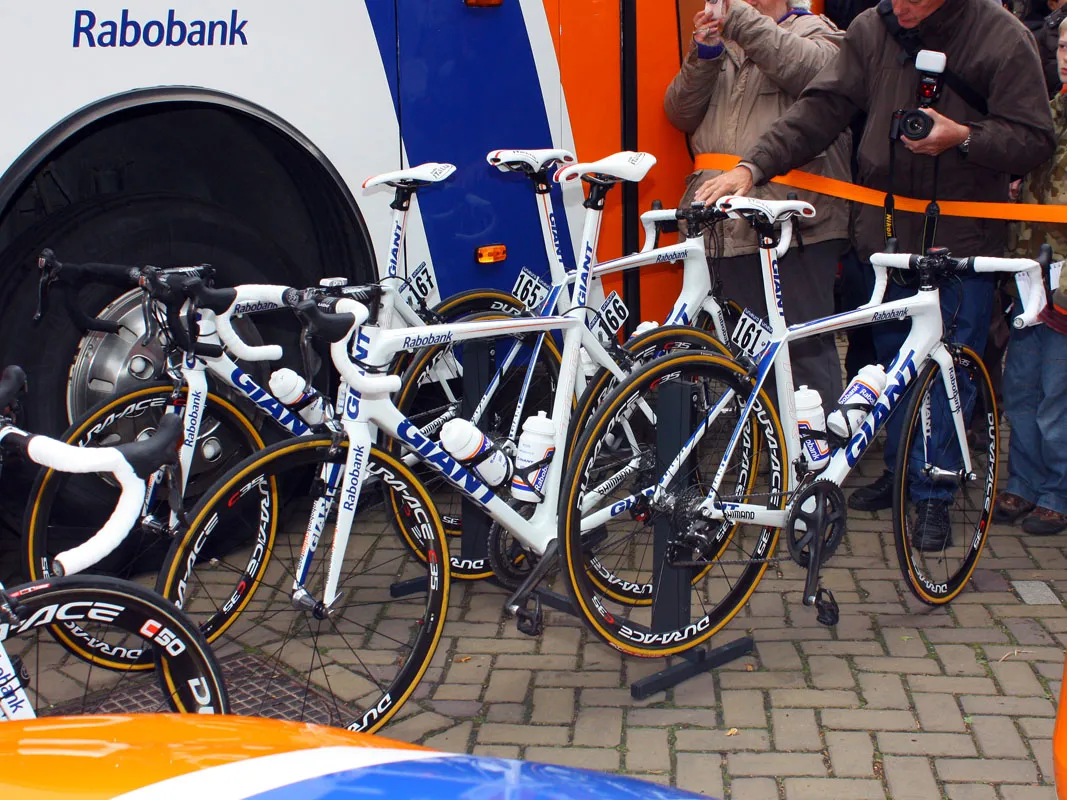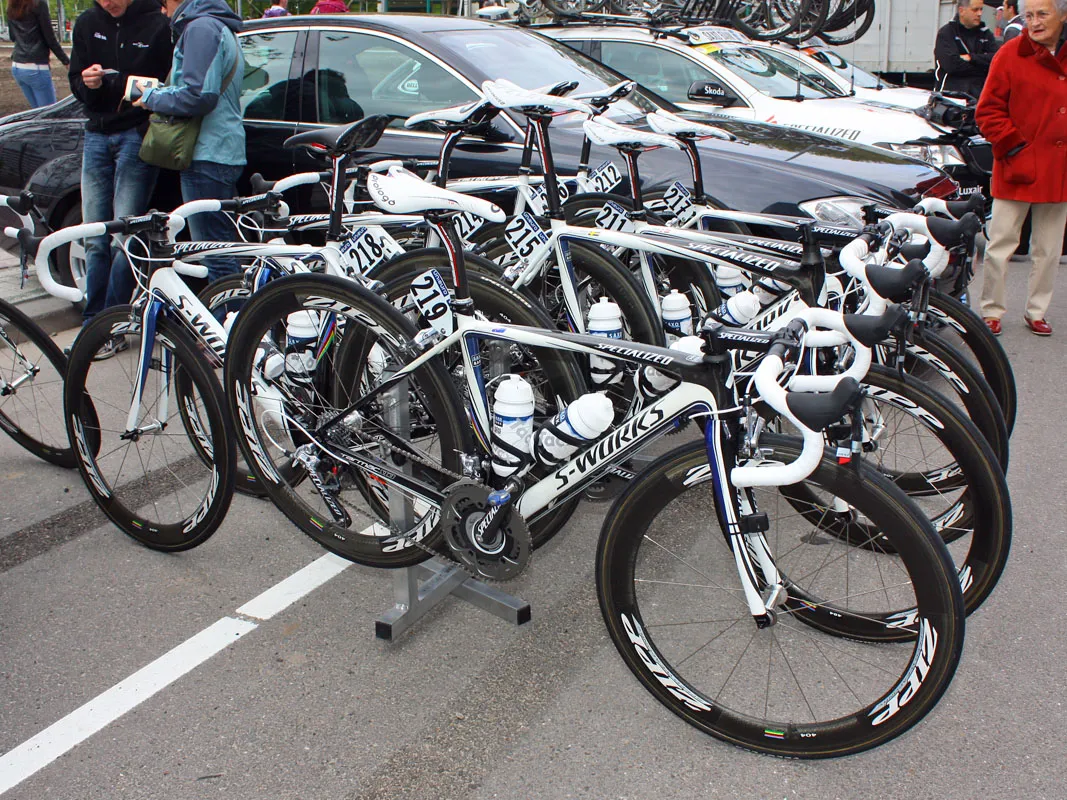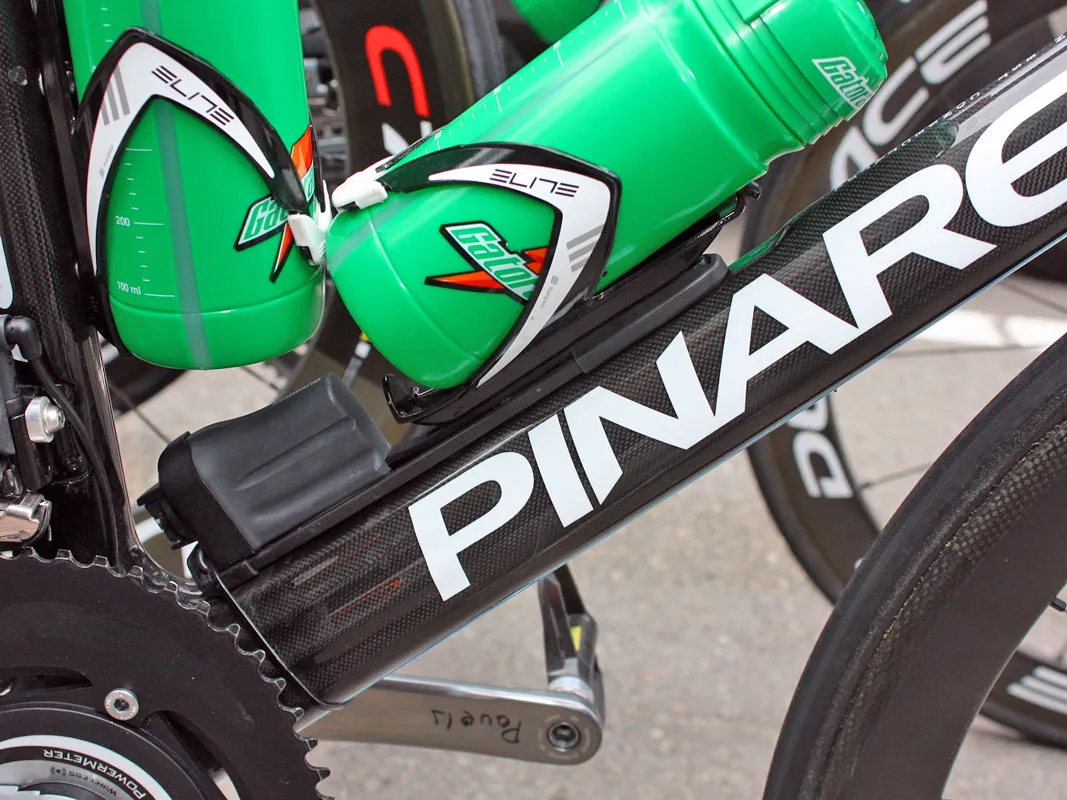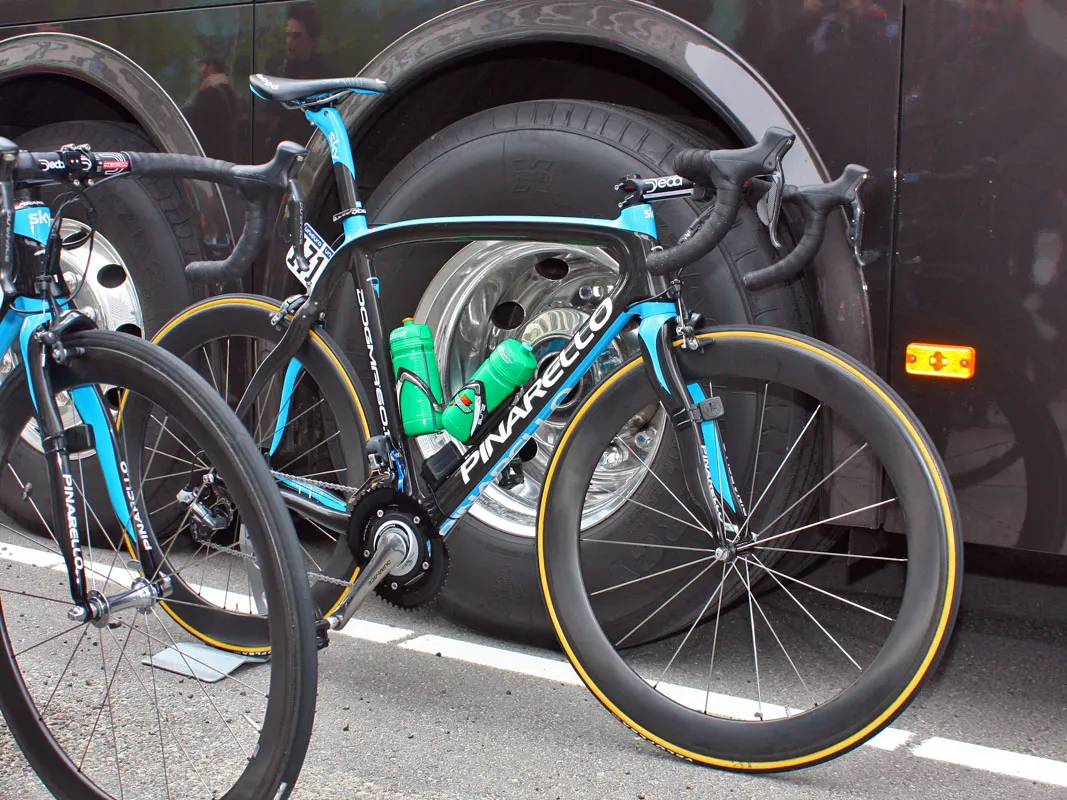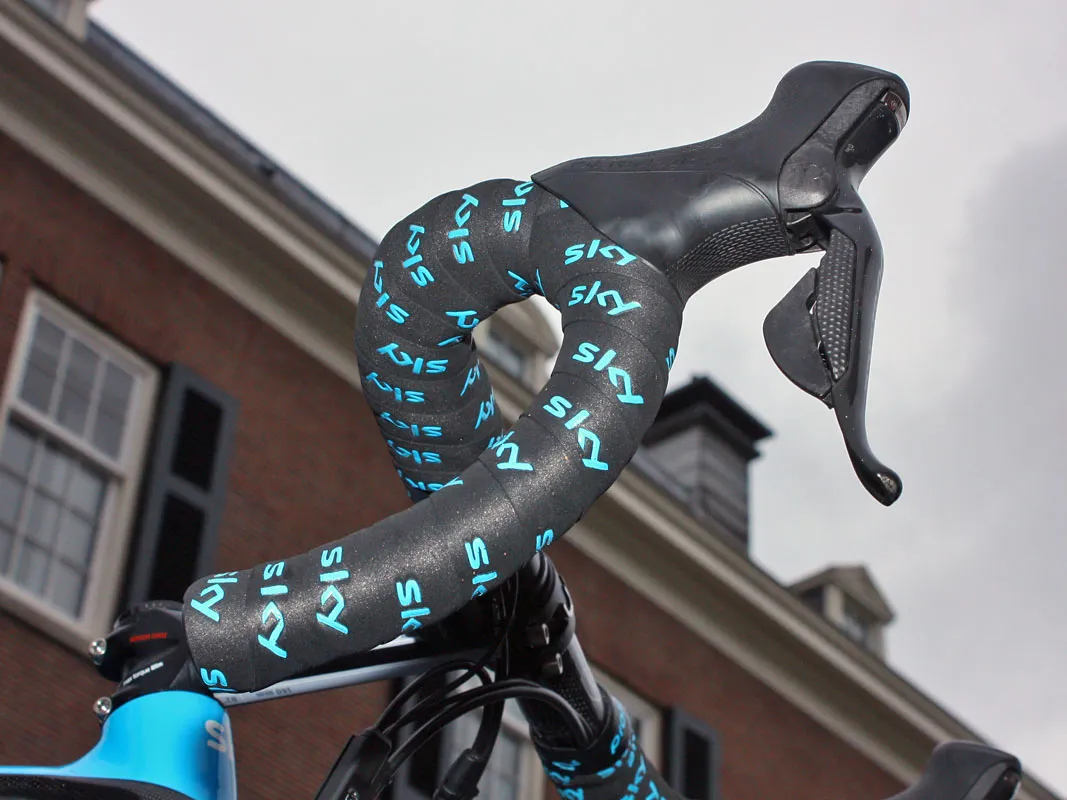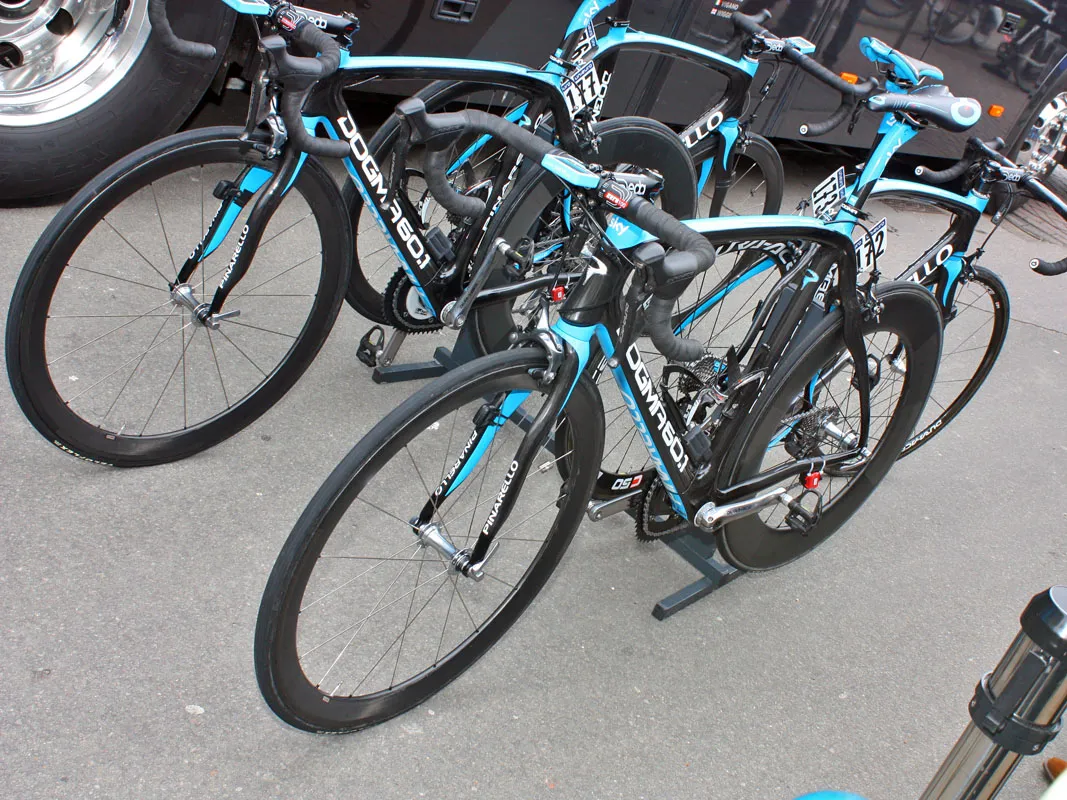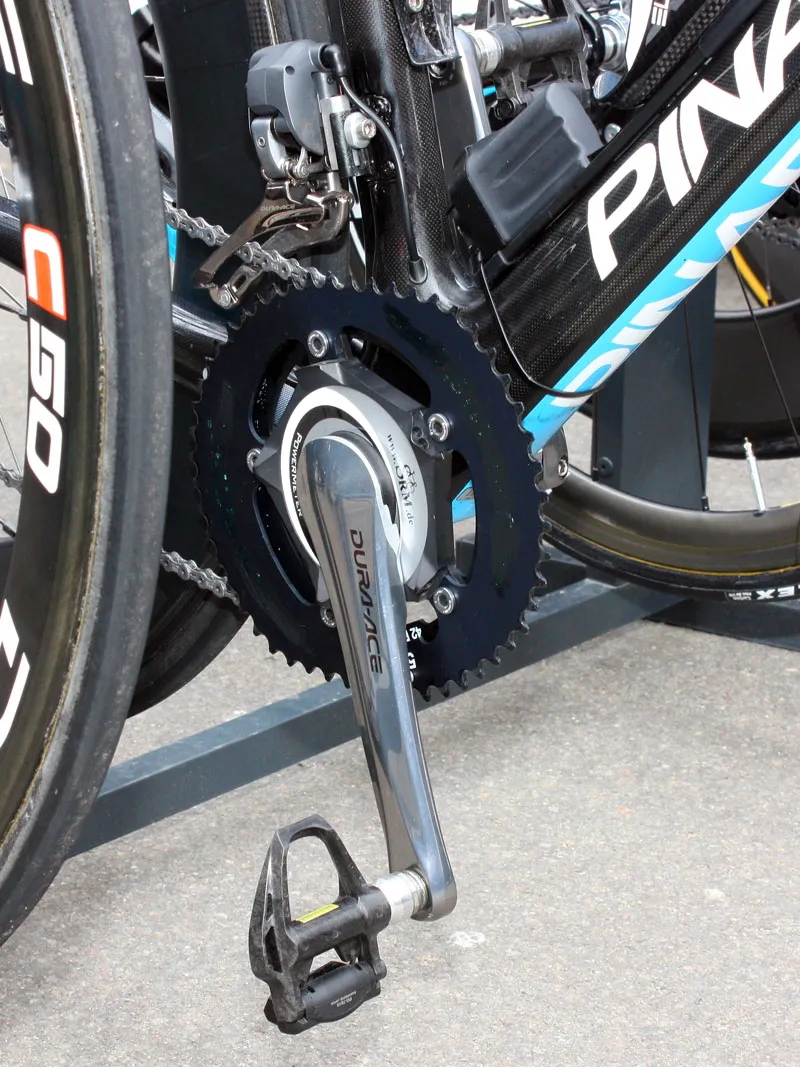This year's flat opening road stages of the Giro d'Italia have naturally favoured the sprinters of the peloton, with Tyler Farrar (Garmin-Transitions) taking stage 2 and Wouter Weylandt (Quick Step) conquering stage 3.
Not surprisingly, most of the major contenders' bikes have been geared more towards outright speed rather than light weight – at least for now.
Deep-section wheels have been the norm, as aerodynamics has been a more important performance metric than mass. Still, the occasionally blustery conditions – especially along the coast – have caused riders to temper those tendencies a bit, as we saw nothing deeper than 80mm (not a single Zipp 1080 in sight).
Some smaller or lighter riders have been going with shallow-section wheels instead. Even stage 3 winner Weylandt went fairly conservative with FFWD's 50mm-deep F5, in the extra-stiff 'C' variant with a higher spoke count to better handle his 79kg (174lb) weight.
As has become customary these days, Cervélo TestTeam riders have gone with aerodynamic frames too, with nearly everyone on the sleek S3. A notable exception is 2008 Tour de France winner Carlos Sastre who still prefers the softer ride of the R3-SL – not that it matters much for him, as he's generally well protected from the wind anyway.
Several Garmin-Transitions riders also played the aero frame card with Felt's speedy AR, which is largely based on the company's dedicated DA time trial platform. Most were spotted with either 40mm-deep Mavic Cosmic Carbone Ultimates or 52mm-deep Cosmic Carbone SLR tubulars (the latter still only available to the public in clincher form). Svein Tuft went all-in, though, with a set of Mavic's new 80mm-deep Cosmic 80 carbon tubulars.
At first glance, Footon-Servetto have followed suit as well, having notably switched from last year's Fuji SL-1 to this year's SST model – for aerodynamics if you believe the company's marketing claims, but more likely because the new frame is simply stiffer and faster, as few frame members appear to truly offer substantially lower drag.
Compared to the SL-1, the SST sports a tapered head tube, a wider bottom bracket shell with press-fit bearing cups, a bigger and internally ribbed down tube, and a relatively deep integrated seatmast that should offer up a more solid pedalling platform than before. Claimed frame weight has even gone up a bit to nearly a full kilo but in these early days of the Giro, speed is king.
